Exposed basement ceilings have transformed from a budget constraint into a bold design statement that captures the raw beauty of industrial style. This approach celebrates the architectural bones of your space by leaving structural elements like beams, pipes, and ductwork visible while turning them into striking design features. Whether you're drawn to the sleek appeal of painted black ceilings, the warmth of natural wood beams, or the edgy sophistication of metallic finishes, industrial-style exposed ceilings offer endless possibilities for creating a space that feels both authentic and intentional. These design choices not only maximize ceiling height in basement spaces but also provide practical benefits like easy access to utilities and cost savings compared to traditional ceiling installations. The key lies in thoughtful execution that transforms utilitarian elements into focal points that enhance rather than detract from your overall design vision.
1. Black Painted Exposed Ceiling
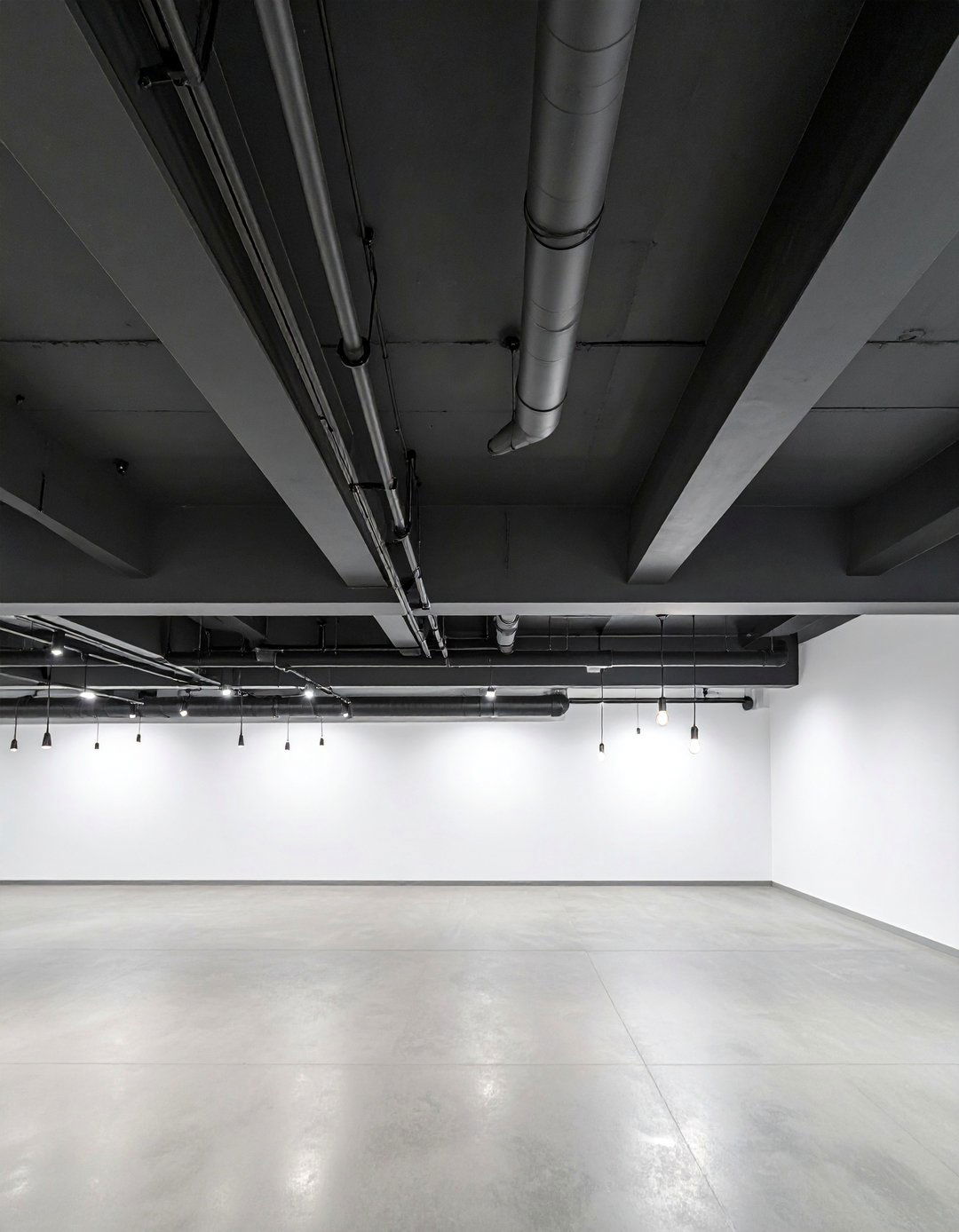
A black painted ceiling creates instant drama and sophistication while making mechanical elements disappear into the shadows. This bold choice unifies disparate pipes, ducts, and beams into a cohesive dark backdrop that feels intentional rather than unfinished. The matte black finish absorbs light, creating an intimate atmosphere that works beautifully in entertainment spaces and home theaters. When paired with strategic lighting fixtures, the dark ceiling provides stunning contrast that makes lighter elements pop. This approach requires ample artificial lighting to prevent the space from feeling cramped, but when executed properly, it transforms raw basement ceilings into sleek industrial showcases that rival high-end loft apartments.
2. White Exposed Beam Treatment
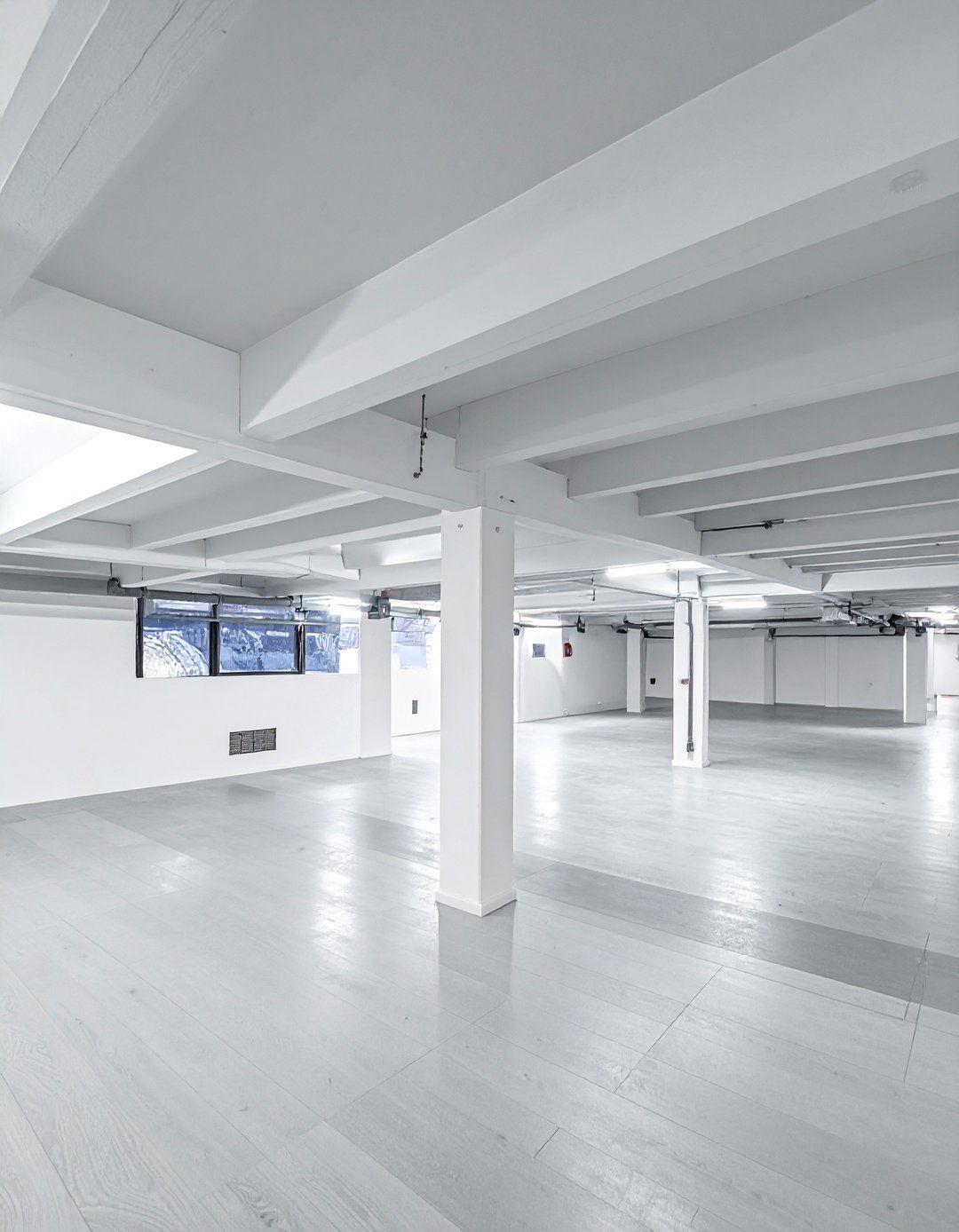
White paint on exposed structural elements brightens basement spaces while maintaining the industrial aesthetic's clean lines. This treatment reflects light throughout the room, making low-ceiling basements feel more spacious and welcoming. The crisp white finish creates a modern farmhouse vibe when combined with natural textures and warm lighting. Does your basement feel too dark and closed-in for comfort? White-painted beams and ductwork provide an excellent solution for homeowners seeking brightness without sacrificing the raw appeal of exposed elements. The neutral backdrop allows colorful furniture and artwork to take center stage while maintaining the architectural interest that makes industrial design so compelling.
3. Natural Wood Beam Showcase
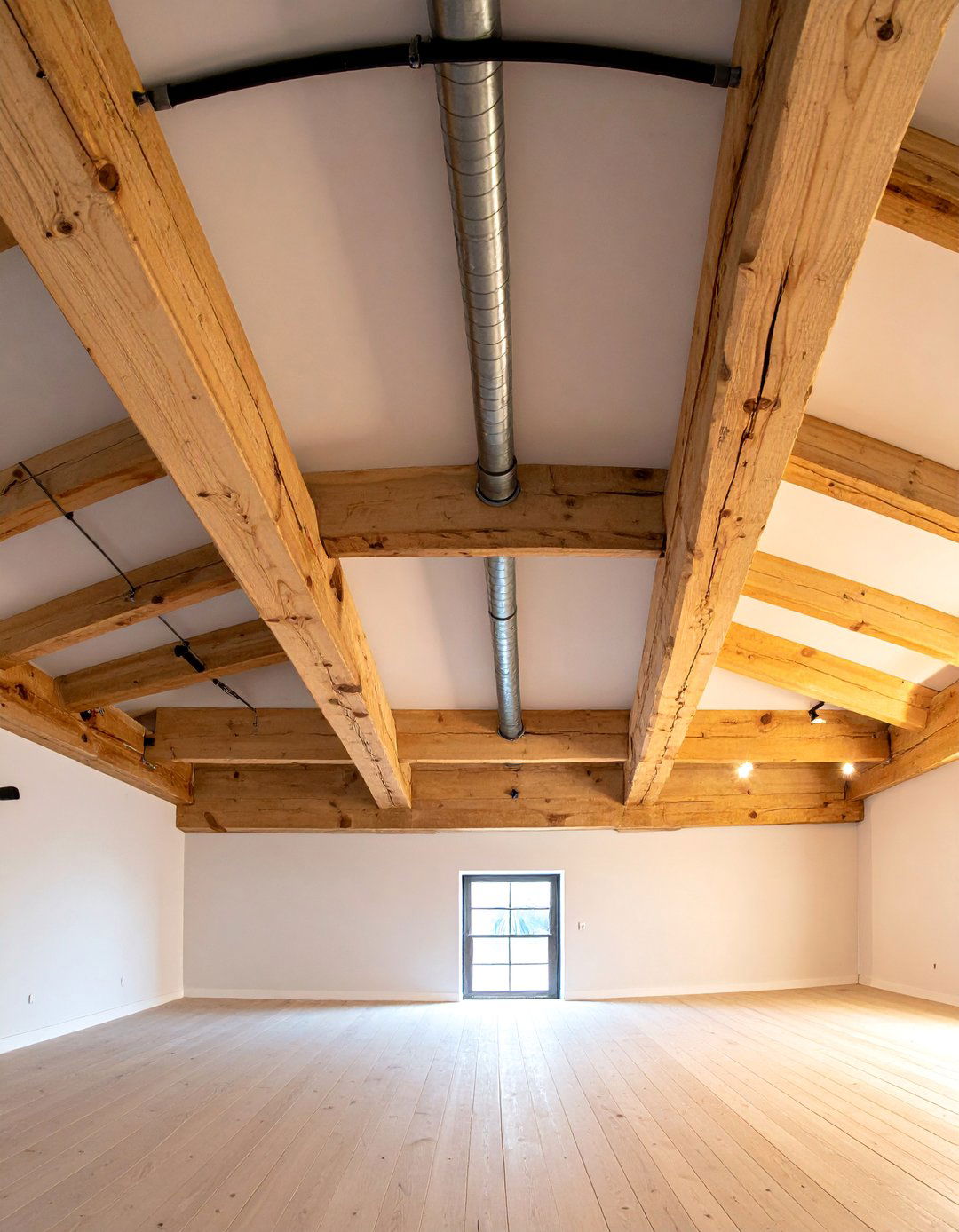
Exposed natural wood beams bring warmth and organic texture to industrial basement designs. These structural elements add character through their natural grain patterns, knots, and variations in tone that machine-made materials cannot replicate. Leaving wood beams in their natural state creates a rustic industrial hybrid that feels both sophisticated and approachable. The warm tones complement metal fixtures and concrete floors while softening the harder edges typically associated with pure industrial design. This approach works particularly well in family rooms and casual entertaining spaces where comfort takes precedence over stark minimalism. Natural wood beams can be sealed for protection while maintaining their authentic appearance and texture.
4. Metallic Silver Ductwork Design
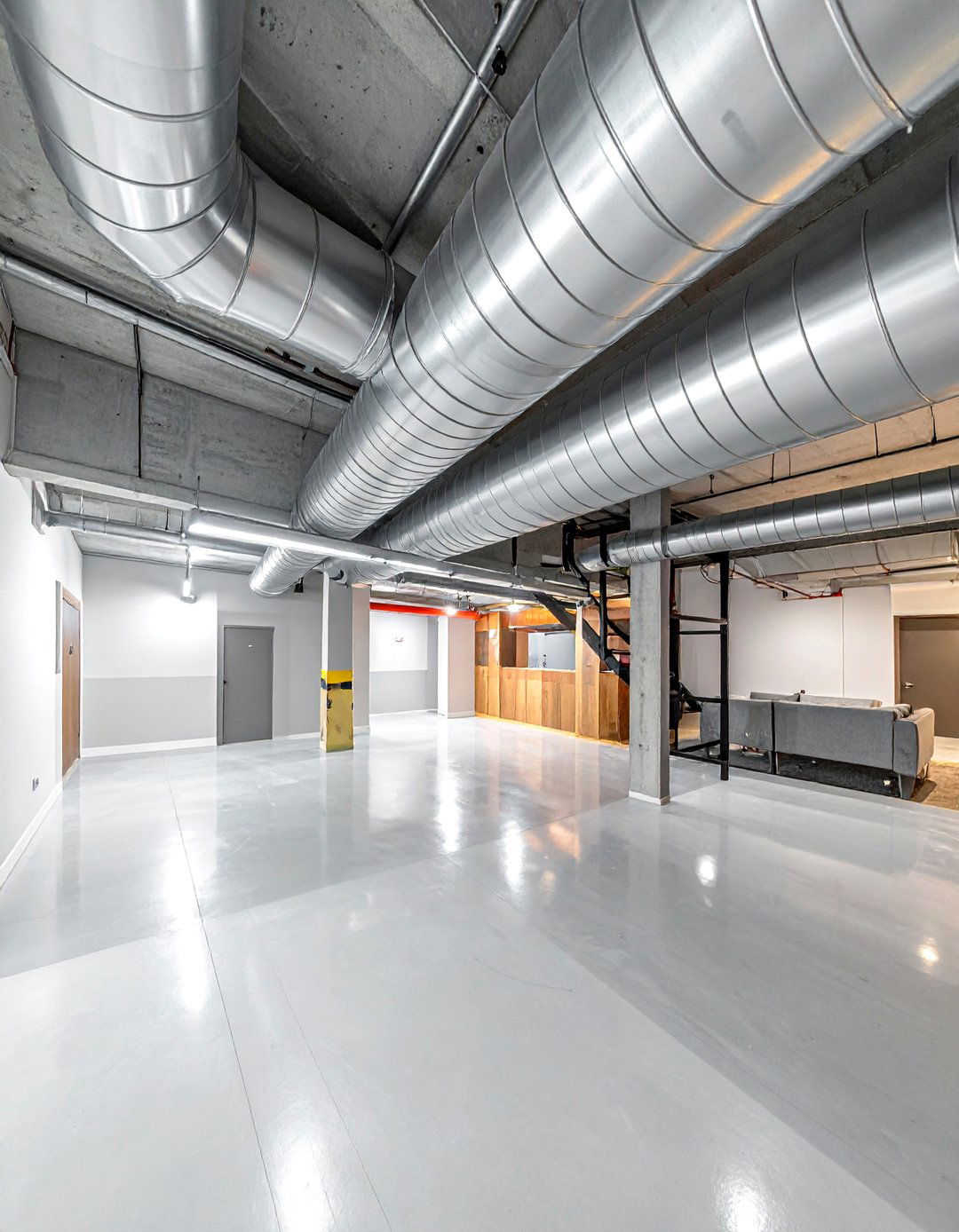
Silver metallic paint on exposed ductwork creates a futuristic industrial aesthetic that catches and reflects light throughout the space. This treatment transforms functional HVAC systems into gleaming sculptural elements that feel intentional and sophisticated. The reflective surface adds visual interest while maintaining the clean lines essential to modern industrial design. How can you make mechanical systems look like high-end design features? Metallic finishes provide the perfect solution for homeowners who want their exposed ceiling elements to contribute positively to the overall aesthetic. This approach works especially well in contemporary basements with modern furnishings and sleek lighting fixtures.
5. Exposed Concrete Ceiling
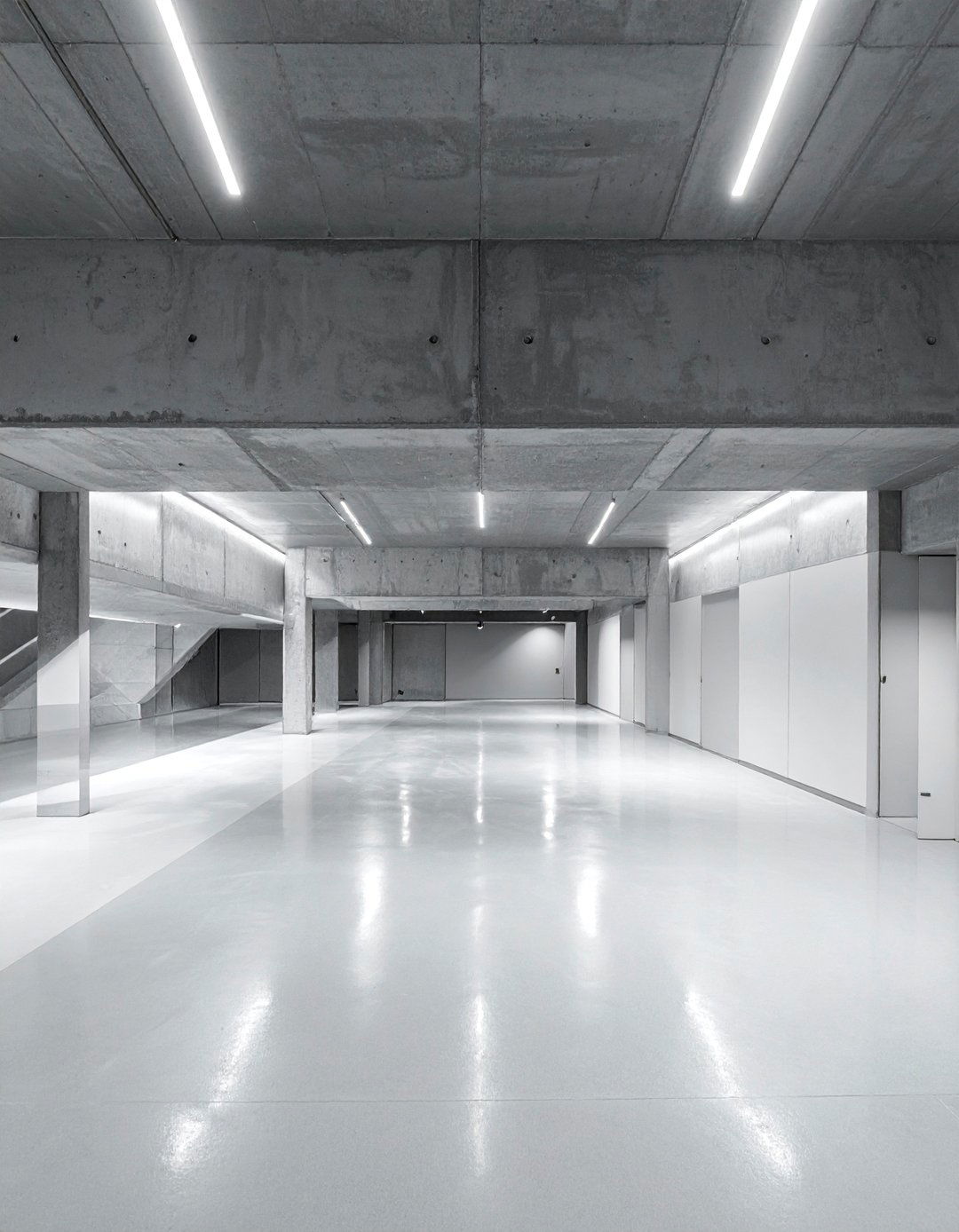
Raw concrete ceilings deliver the ultimate industrial aesthetic with their uncompromising minimalist appeal. This material choice celebrates the structural honesty that defines industrial design while providing excellent durability and low maintenance. The natural gray tones and subtle texture variations create visual interest without overwhelming other design elements. Concrete's thermal mass also helps regulate basement temperatures naturally. When combined with strategic lighting and warm furnishings, exposed concrete ceilings create sophisticated urban loft atmospheres. This treatment works best in basements with adequate height and modern furnishings that complement rather than compete with the material's bold presence.
6. Copper Pipe Accent Features
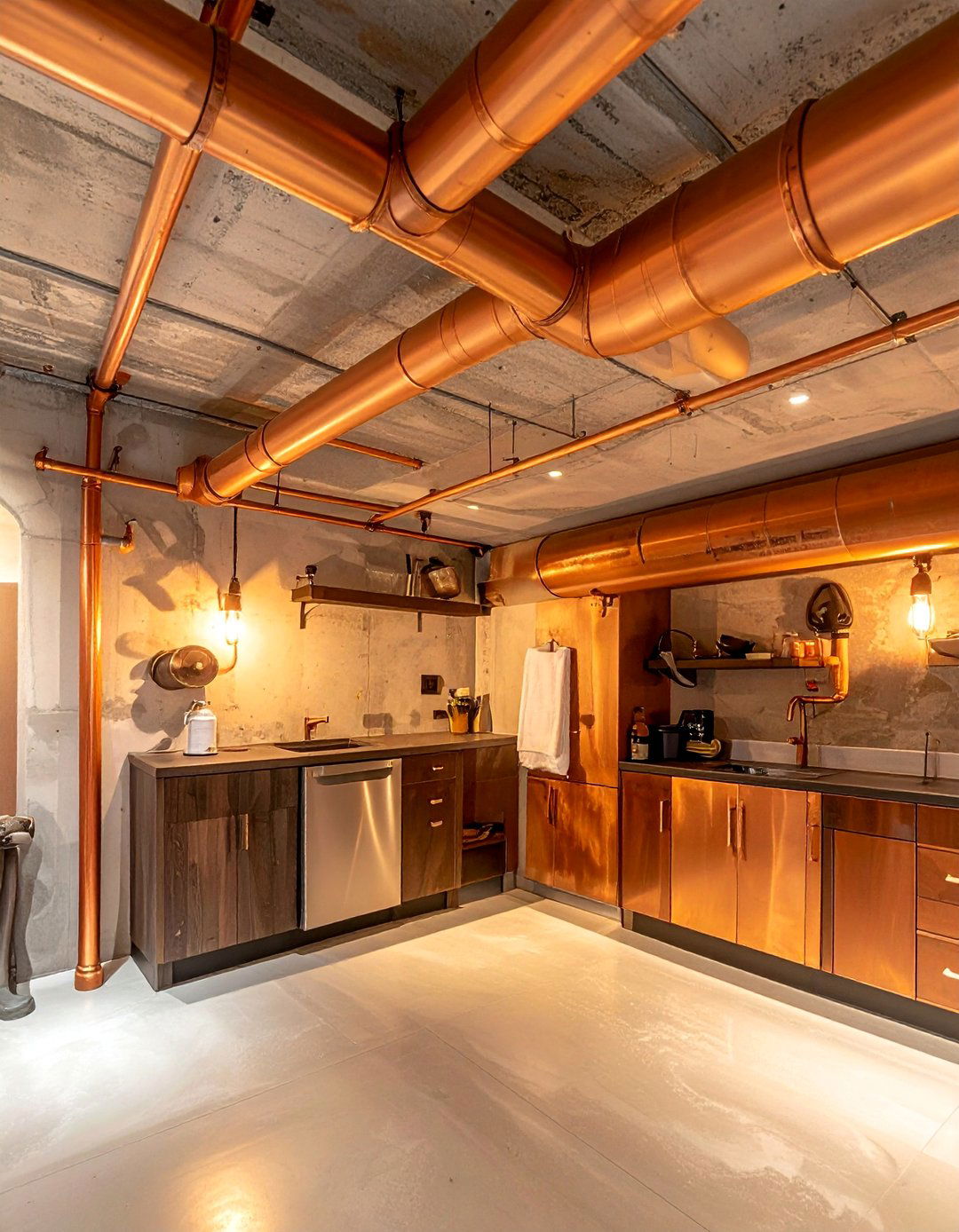
Exposed copper plumbing and HVAC components add warm metallic accents that elevate industrial basement designs. The natural patina and rich bronze tones create visual warmth while maintaining the authentic industrial aesthetic. Copper pipes can be left natural or polished for different effects, offering flexibility in achieving your desired level of refinement. These elements work particularly well as design features when arranged in interesting patterns or highlighted with appropriate lighting. The antimicrobial properties of copper also provide practical benefits in basement environments. When integrated thoughtfully, copper elements create sophisticated focal points that demonstrate how functional systems can enhance rather than detract from overall design quality.
7. Reclaimed Wood Plank Ceiling
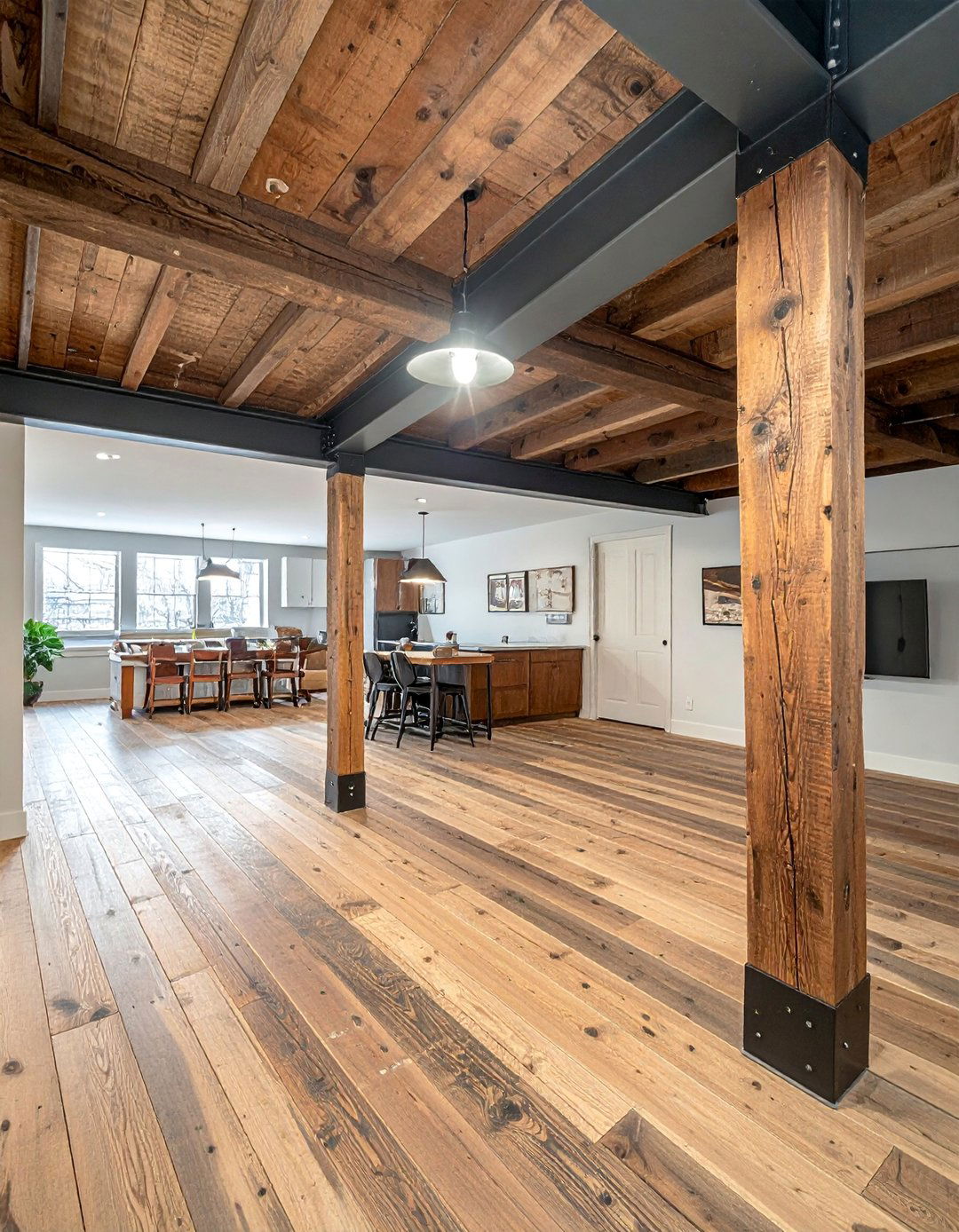
Reclaimed wood planks installed between exposed beams create rustic industrial charm with historical character. Each weathered board tells a story through its unique patina, nail holes, and natural aging that new materials cannot replicate. This approach combines industrial structural elements with warm organic textures for spaces that feel both edgy and inviting. The varying widths and tones of reclaimed planks add visual interest while maintaining the open ceiling concept. This treatment provides some sound absorption benefits while preserving access to utilities. Installation between existing beams creates defined sections that add architectural detail without completely covering the industrial elements that make exposed ceilings so appealing.
8. Track Lighting Integration
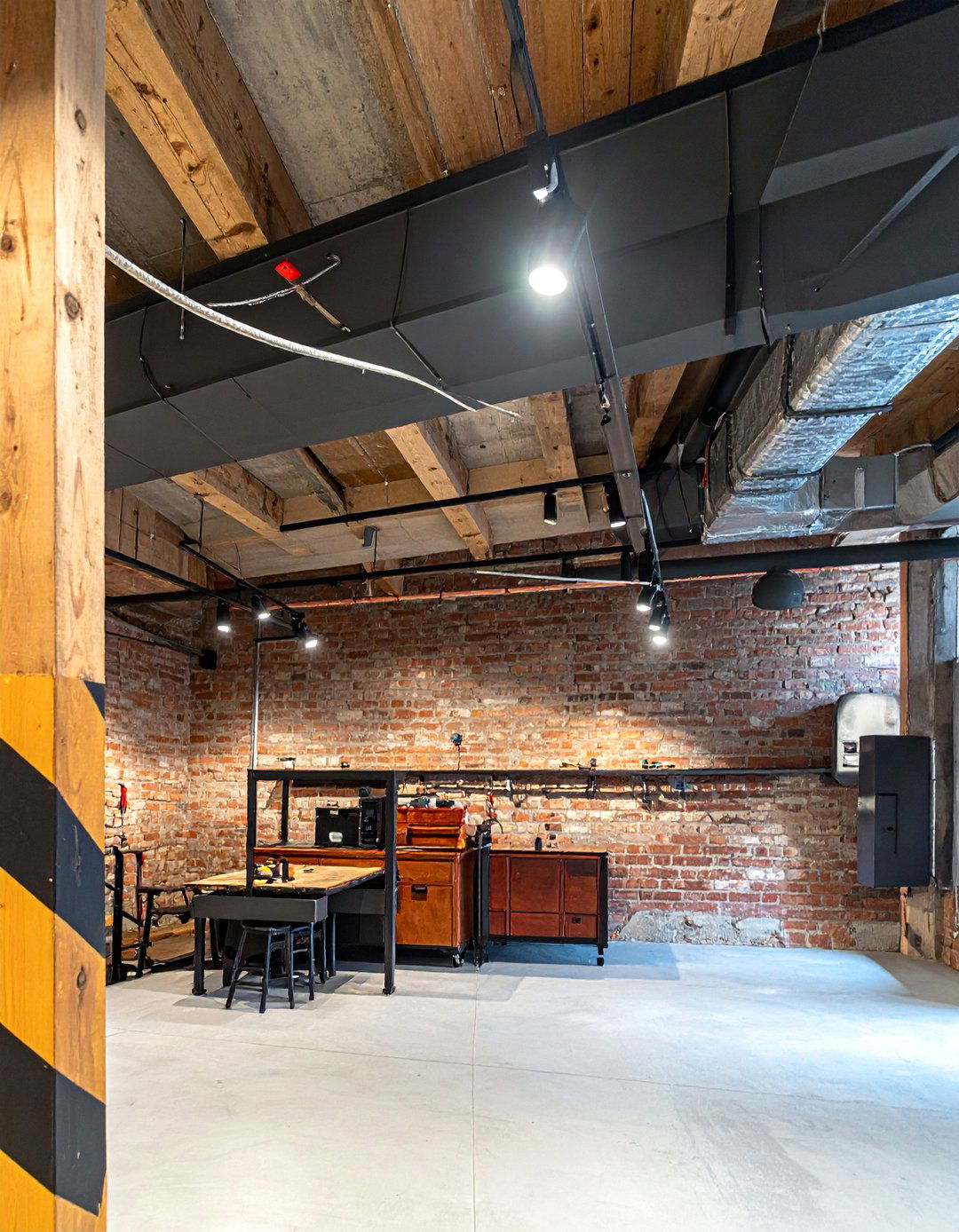
Industrial track lighting systems mounted on exposed beams provide flexible illumination while enhancing the utilitarian aesthetic. These fixtures emphasize the structural elements while offering practical lighting solutions for basement activities. The linear nature of track systems complements the geometric patterns created by beams and ductwork. Can you achieve both functionality and style with industrial lighting? Track systems offer infinite adjustment possibilities, allowing you to direct light where needed while maintaining the clean lines essential to industrial design. Choose fixtures with exposed bulbs or metal shades to reinforce the industrial theme while providing adequate illumination for various basement activities and functions.
9. Edison Bulb String Installations
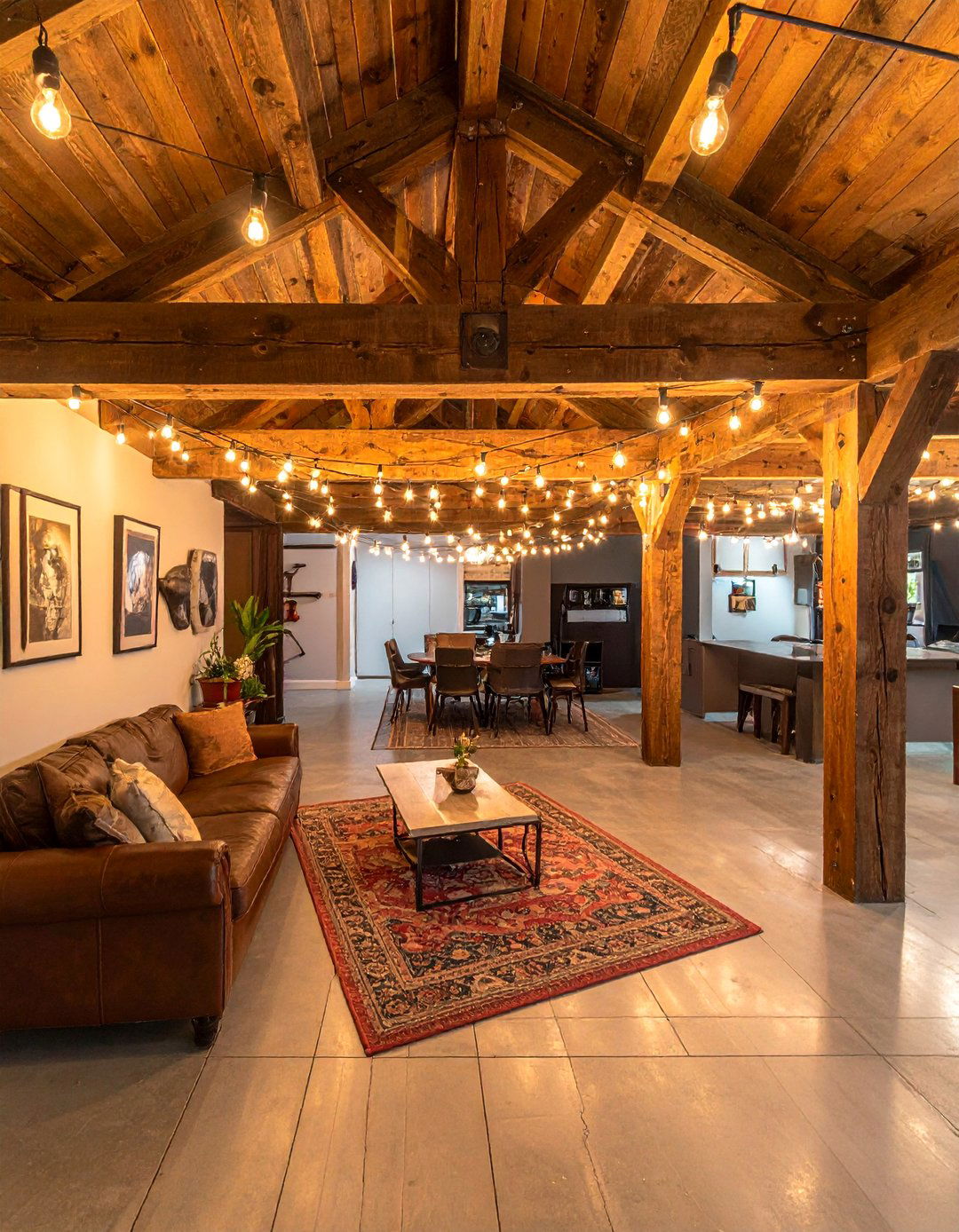
Edison bulb string lights draped between exposed beams create warm ambient lighting with vintage industrial appeal. These fixtures soften the harsh edges of mechanical systems while adding romantic warmth to basement spaces. The exposed filaments and warm light temperatures create inviting atmospheres perfect for entertaining and relaxation. This affordable lighting solution can transform stark industrial elements into cozy gathering spaces. The flexible installation options allow creative arrangements that highlight architectural features while providing practical illumination. String lights work particularly well in combination with other industrial elements, creating layered lighting schemes that enhance both functionality and atmosphere in basement entertainment areas.
10. Gray Matte Finish Treatment
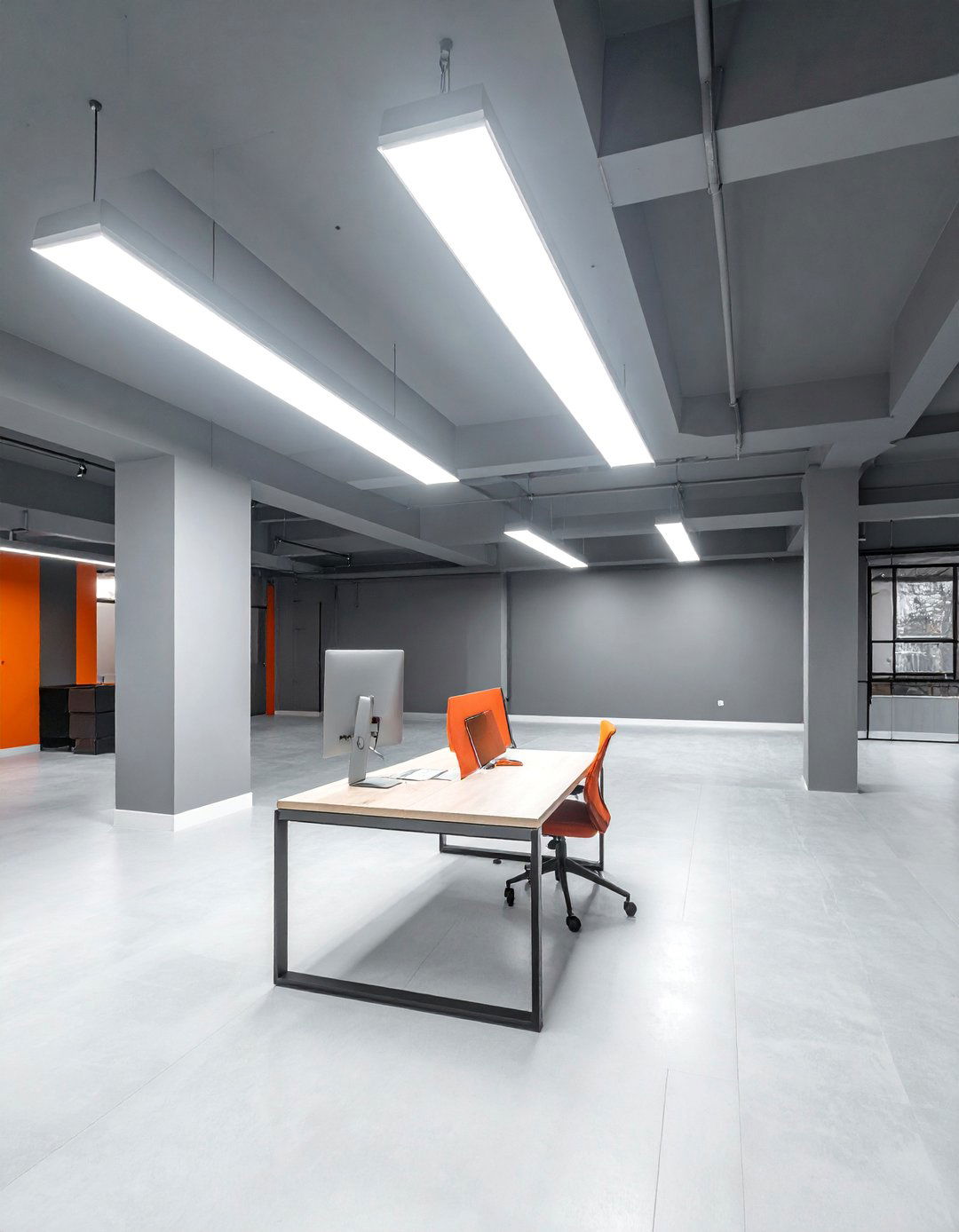
Gray matte paint on exposed ceiling elements creates sophisticated neutral backgrounds that complement various design styles. This versatile color choice provides visual cohesion without the stark contrast of black or white alternatives. The matte finish minimizes glare while hiding minor imperfections in pipes and ductwork. Gray tones work beautifully with both warm and cool color palettes, making them ideal for basements that serve multiple functions. This treatment creates contemporary industrial aesthetics that feel refined rather than raw. The subtle color allows architectural features to remain visible while creating unified backgrounds that enhance rather than compete with furniture and decor choices throughout the space.
11. Exposed Metal Truss Systems
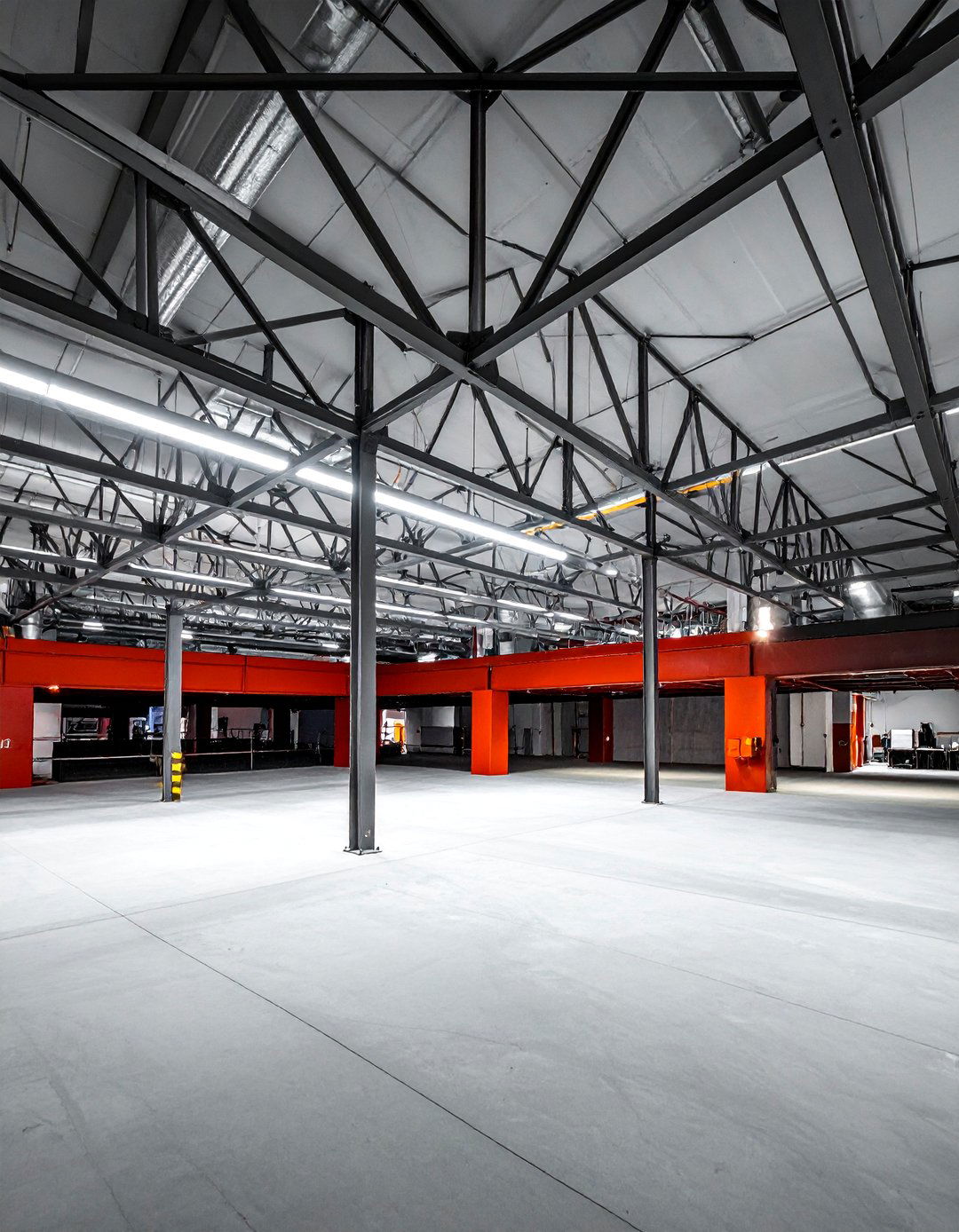
Steel truss systems left exposed create dramatic industrial ceiling features with impressive structural presence. These engineered elements showcase the beauty of functional design while providing essential structural support. The geometric patterns formed by intersecting metal members create visual interest and emphasize the industrial aesthetic's celebration of engineering. Do you want your ceiling to make a bold architectural statement? Exposed trusses provide impressive focal points that demonstrate how structural necessity can become decorative assets. When properly finished and integrated with appropriate lighting, metal truss systems create sophisticated industrial atmospheres that rival professional loft conversions in urban buildings.
12. Corrugated Metal Panel Accents
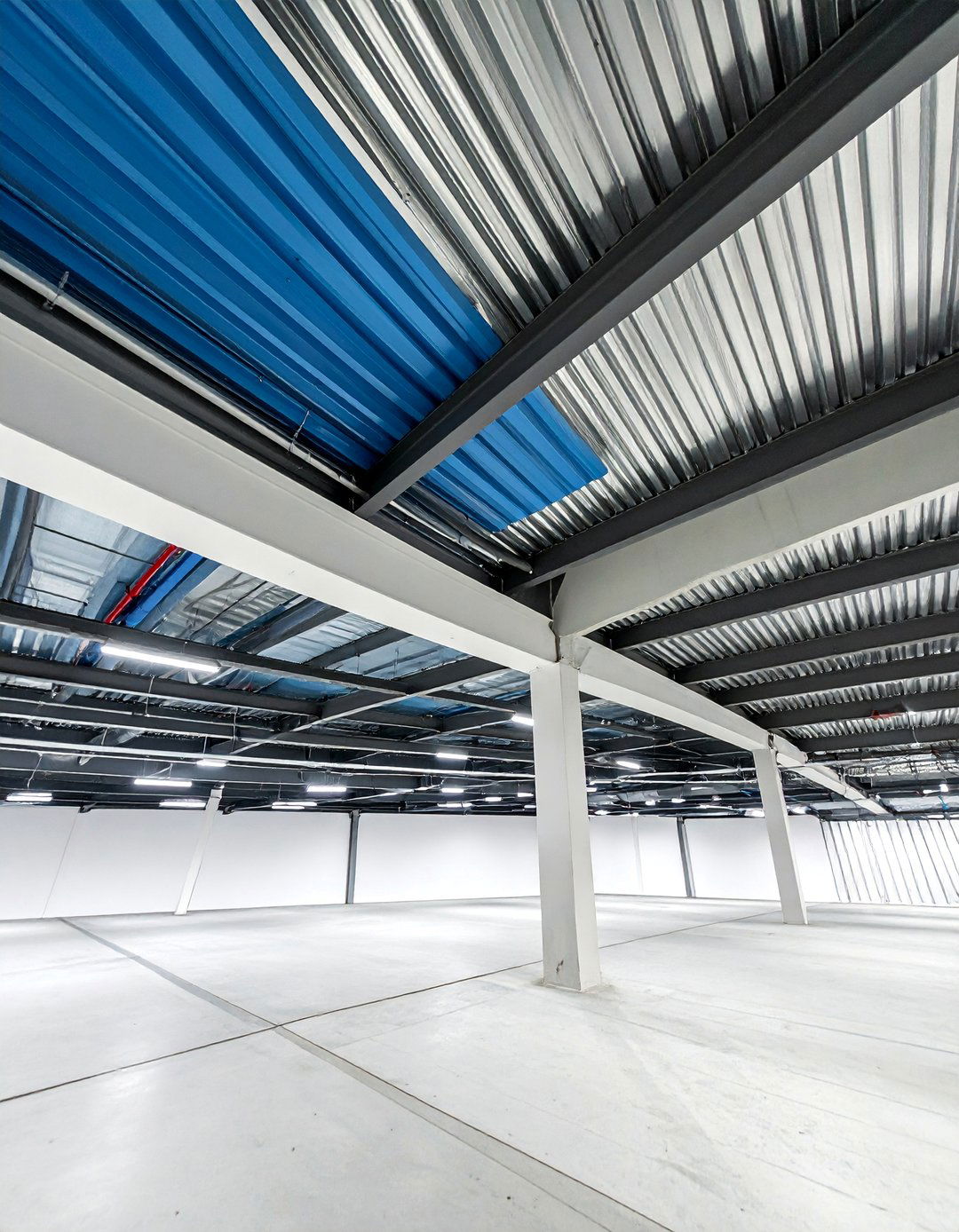
Corrugated metal panels installed between beams add textural interest while maintaining industrial authenticity. These lightweight panels provide visual coverage for less attractive ceiling areas while preserving the exposed beam aesthetic. The distinctive ridged pattern creates shadow lines that add depth and movement to ceiling designs. This approach offers practical benefits by concealing insulation or wiring while maintaining easy access for future modifications. Corrugated panels can be painted or left natural depending on your desired aesthetic outcome. This treatment works particularly well in workshop areas or industrial-themed entertainment spaces where authentic materials enhance the overall design concept.
13. Painted Ductwork Features
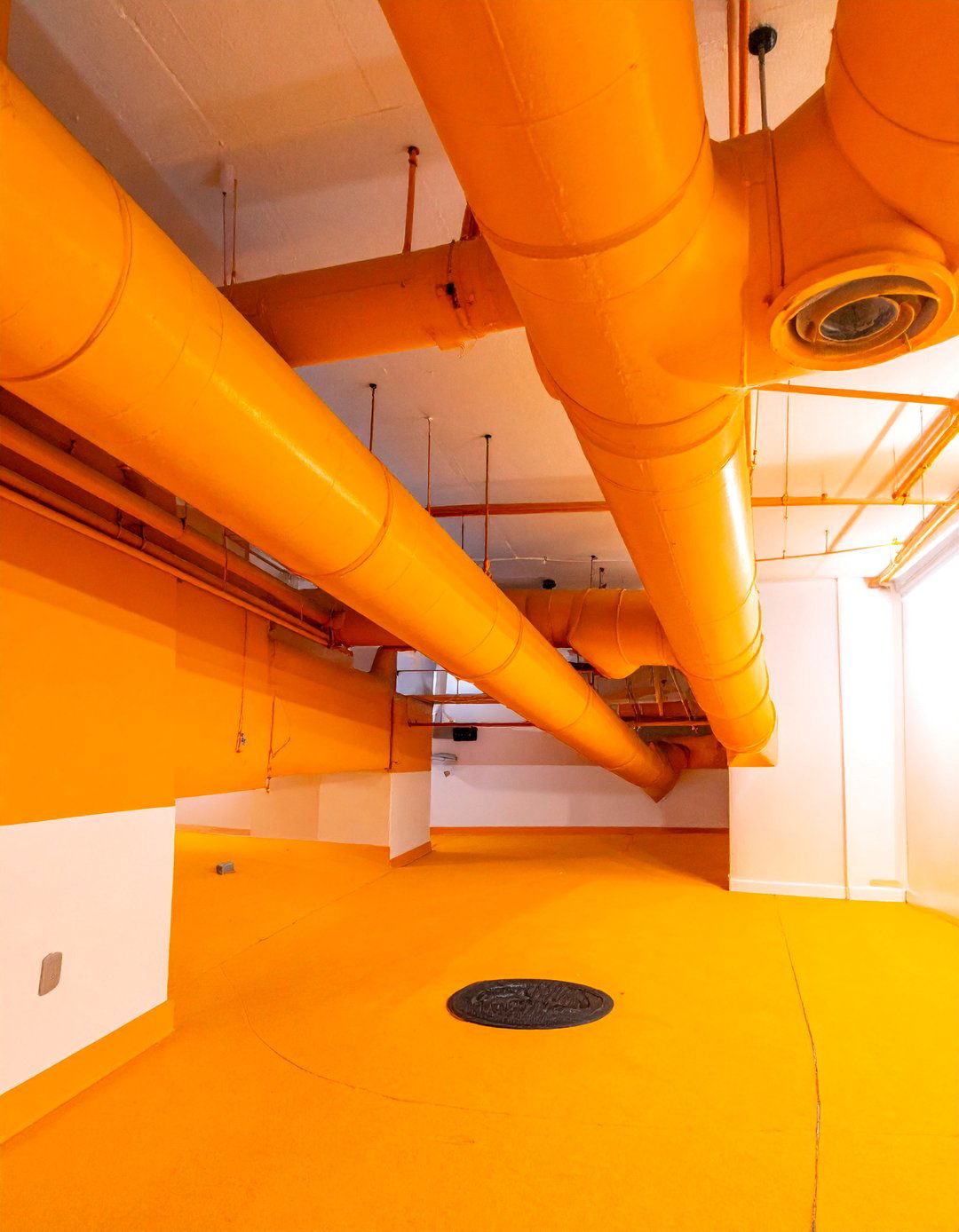
Bold colors applied to exposed ductwork transform functional elements into artistic focal points. This approach allows homeowners to inject personality while maintaining industrial design principles. Bright colors like orange, teal, or yellow create playful contrasts against neutral backgrounds. What happens when you treat mechanical systems as artistic opportunities? Colorful ductwork becomes sculptural elements that contribute positively to overall design schemes. This treatment works especially well in creative spaces, home gyms, or children's play areas where energy and creativity take precedence over conventional sophistication. Choose high-quality paints designed for metal surfaces to ensure durability and proper adhesion.
14. Vintage Industrial Lighting
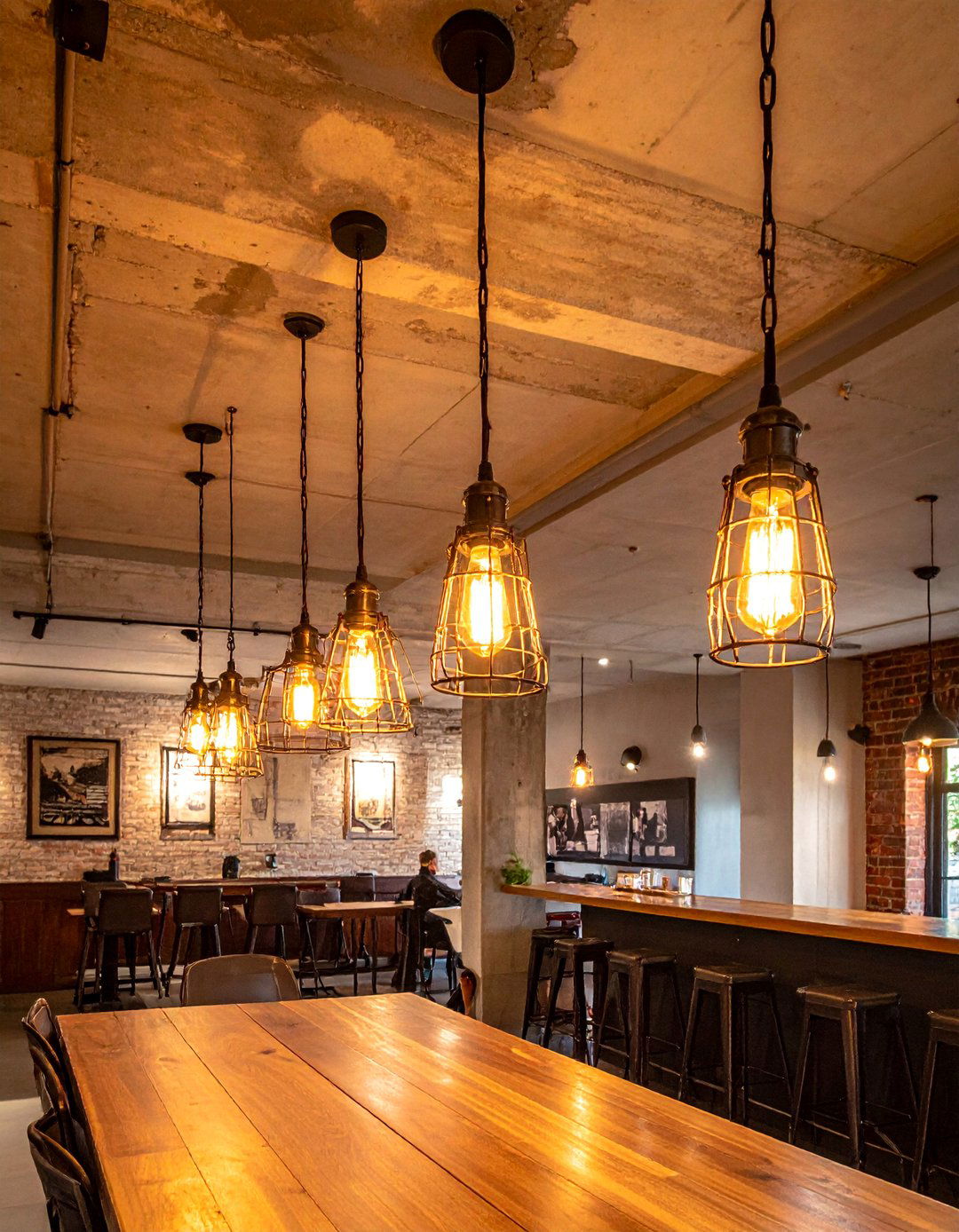
Period-appropriate industrial fixtures mounted on exposed elements create authentic vintage atmospheres. Cage lights, factory pendants, and barn-style fixtures enhance the historical character of industrial design. These lighting choices support the narrative that exposed ceilings tell about honest, functional design. Vintage fixtures often feature superior construction quality and unique character that mass-produced alternatives cannot match. The patina and wear patterns on authentic vintage pieces add layers of visual interest and historical continuity. When combined with exposed structural elements, vintage lighting creates cohesive industrial narratives that feel authentic rather than contrived or themed.
15. Fabric Panel Installations
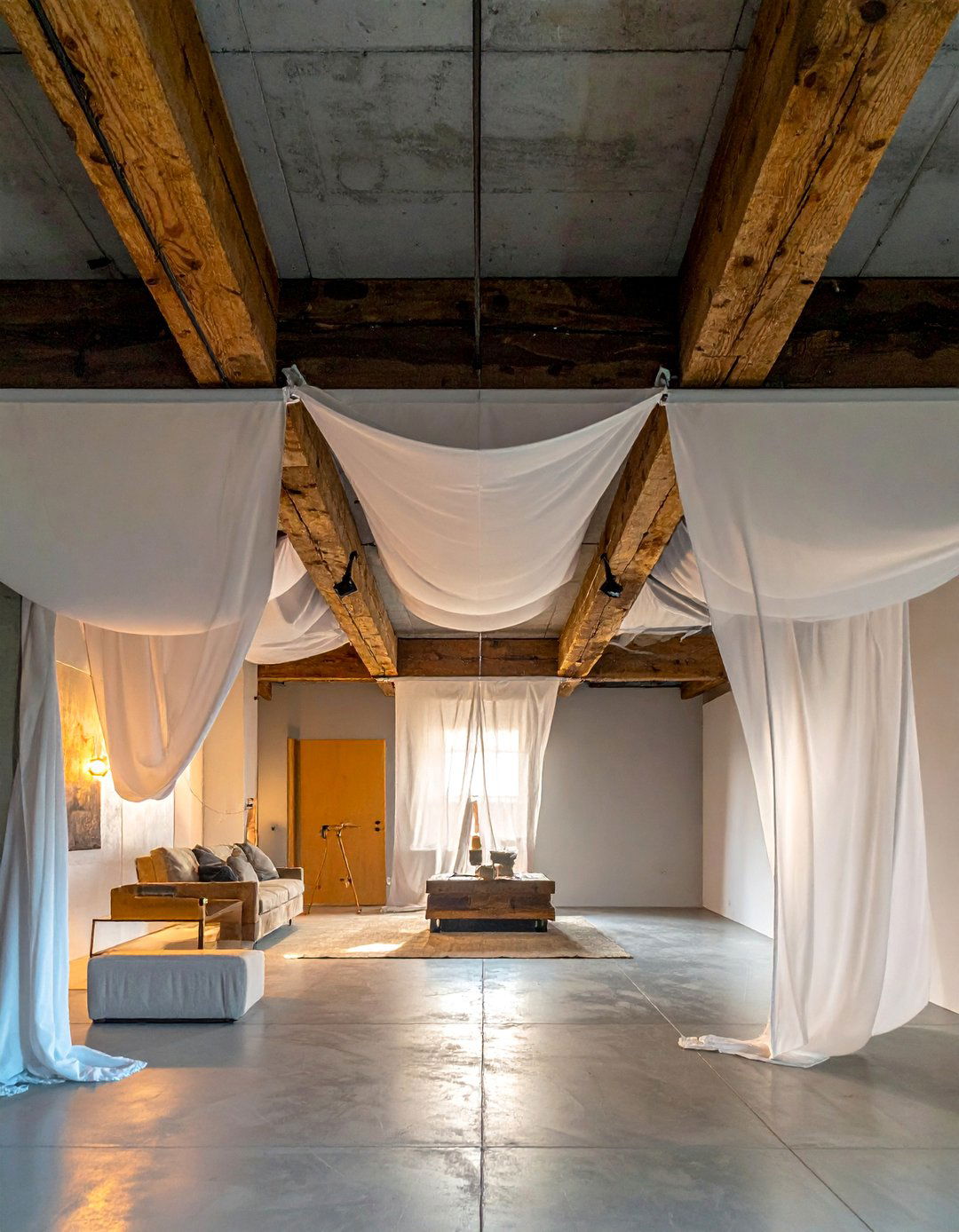
Suspended fabric panels between exposed beams provide sound absorption while maintaining open ceiling aesthetics. These elements can be easily changed to update color schemes or seasonal variations. The soft textures contrast beautifully with hard industrial surfaces, creating balanced environments that feel more inviting. How can you soften industrial elements without compromising their authentic appeal? Fabric installations offer practical acoustic benefits while adding visual warmth to basement spaces. Choose flame-retardant materials in colors that complement your overall design scheme. This approach provides flexibility for future design changes while addressing common basement challenges like sound control and visual softness.
16. Minimalist Concrete Finishes
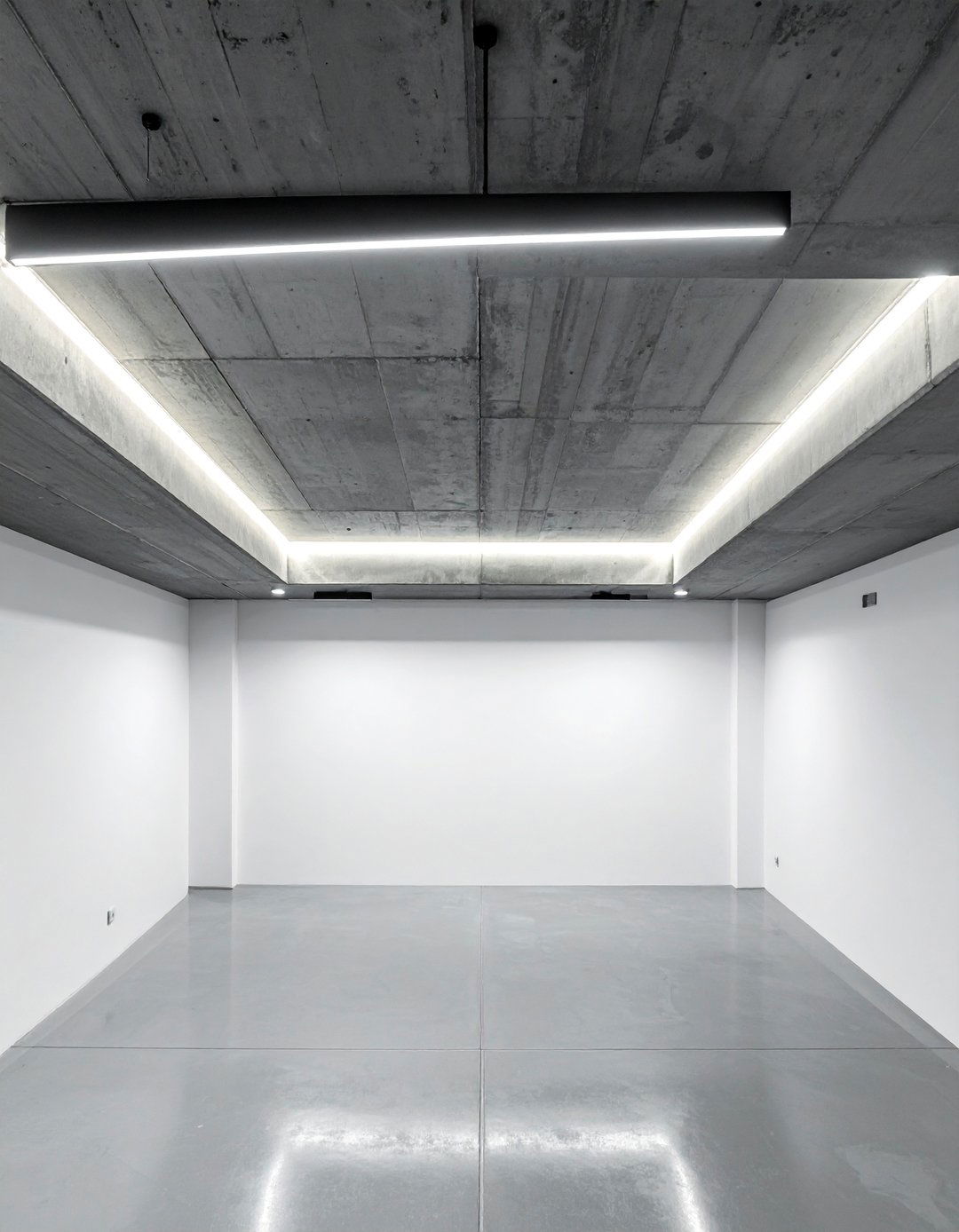
Polished concrete ceilings create sleek minimalist environments that emphasize clean lines and unadorned surfaces. This approach celebrates material honesty while providing durable, low-maintenance ceiling solutions. The smooth finish reflects light evenly throughout basement spaces, enhancing brightness and perceived space. Professional polishing creates subtle variations in tone and texture that add visual interest without competing with other design elements. This treatment works best in modern basement conversions where simplicity and sophisticated materials take precedence over decorative elements. The monolithic appearance creates seamless transitions between ceiling and wall surfaces for truly integrated industrial aesthetics.
17. Integrated Storage Solutions
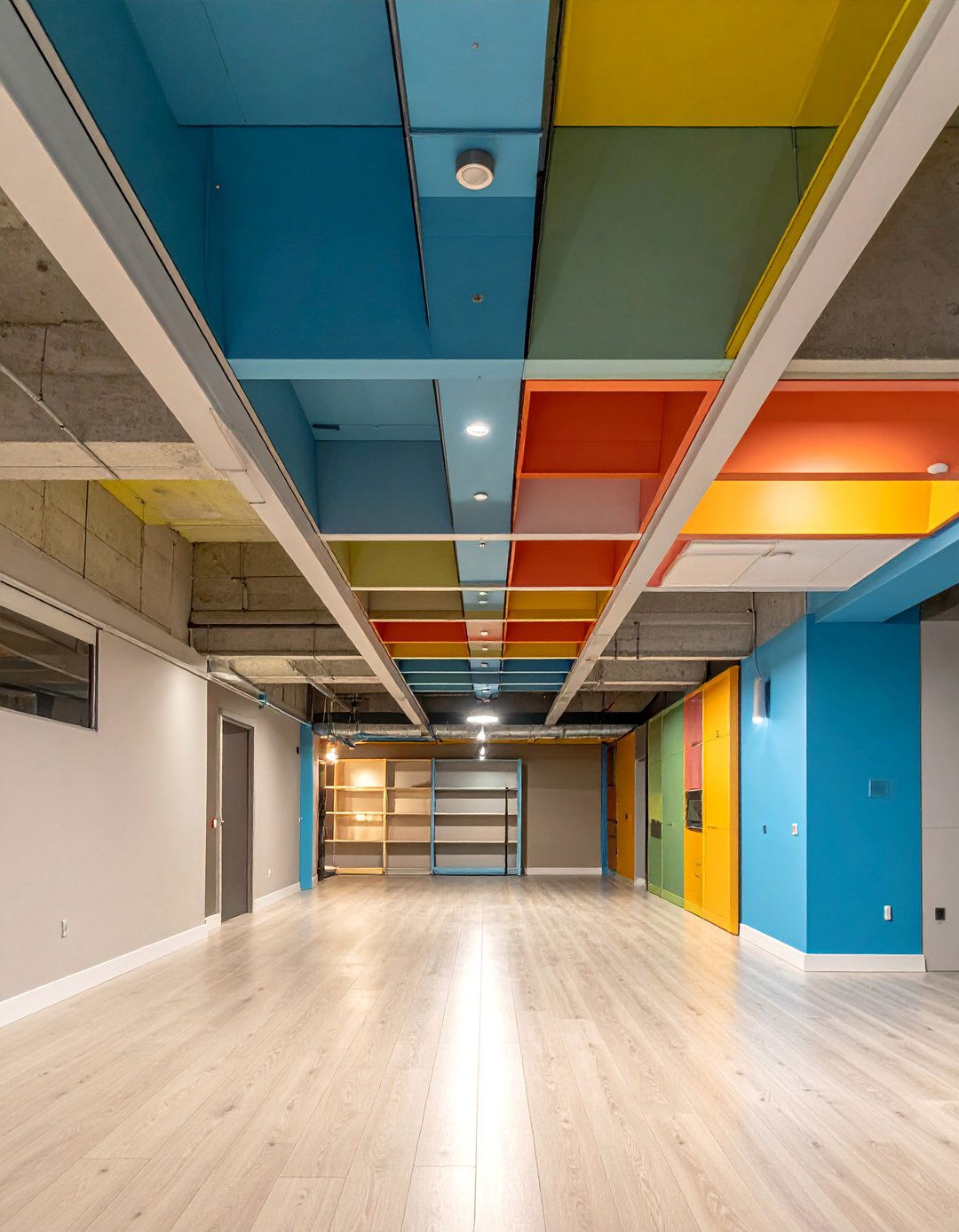
Built-in storage systems incorporated between exposed beams maximize functionality while maintaining industrial design integrity. These solutions transform ceiling space into practical storage areas without compromising the open aesthetic. Custom storage can be designed to complement existing structural elements while providing essential organization. Why choose between style and functionality when you can achieve both? Integrated storage solutions demonstrate how industrial design principles can enhance practical living. Use materials and finishes that coordinate with existing exposed elements to create cohesive designs. This approach works particularly well in basement workshops, home gyms, or multi-purpose areas where storage needs are significant.
18. LED Strip Integration
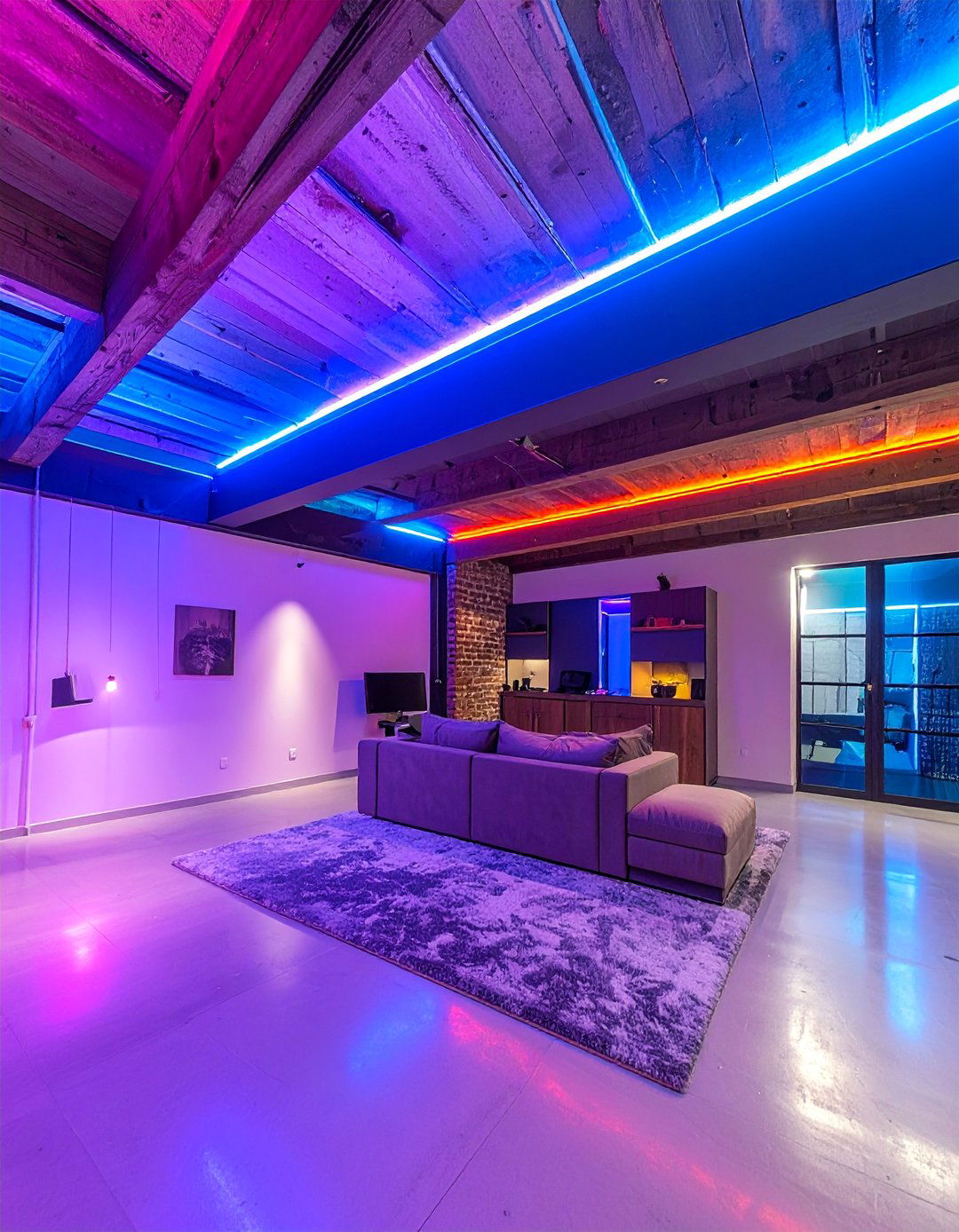
LED strips installed along exposed beams create dramatic accent lighting while highlighting architectural features. These energy-efficient systems provide customizable lighting effects that can change color and intensity based on activities or moods. The linear installation emphasizes the geometric patterns created by structural elements. Modern LED technology offers infinite color possibilities and smart home integration capabilities. This approach combines cutting-edge technology with industrial design principles for sophisticated lighting schemes. LED strips can be programmed for different scenarios, from bright task lighting to colorful entertainment modes, making them ideal for multi-purpose basement spaces.
19. Mixed Material Mosaic
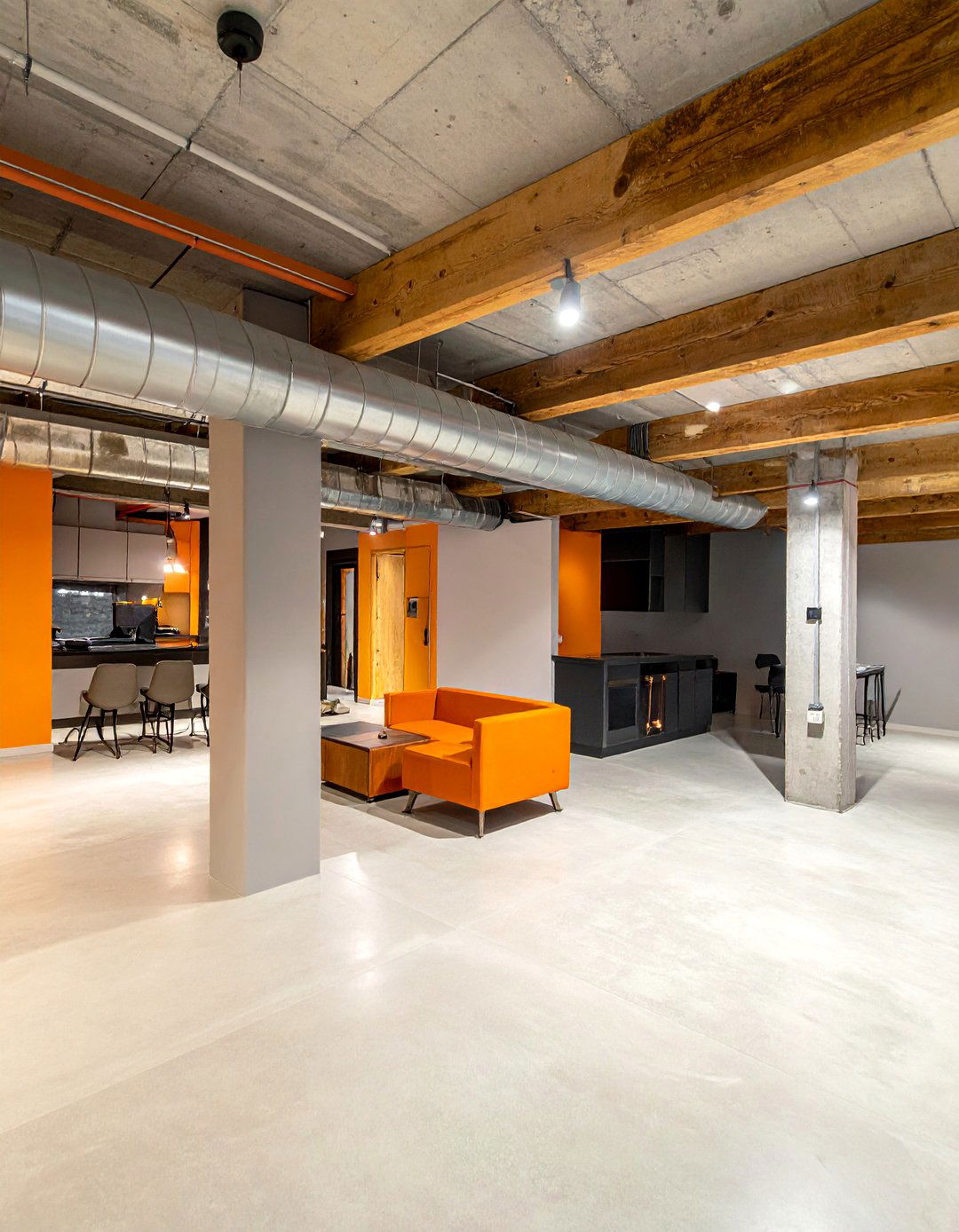
Combining various industrial materials creates complex ceiling designs that showcase different textures and finishes. This approach might include wood beams, metal ductwork, and concrete elements working together harmoniously. The contrast between materials creates visual interest while maintaining industrial design principles. Each material contributes unique properties and aesthetic qualities to the overall composition. Mixed material designs require careful coordination to avoid visual chaos while celebrating the diversity of industrial building materials. This treatment works best in larger basement spaces where different zones can accommodate different material approaches while maintaining overall design coherence.
20. Suspended Acoustic Panels
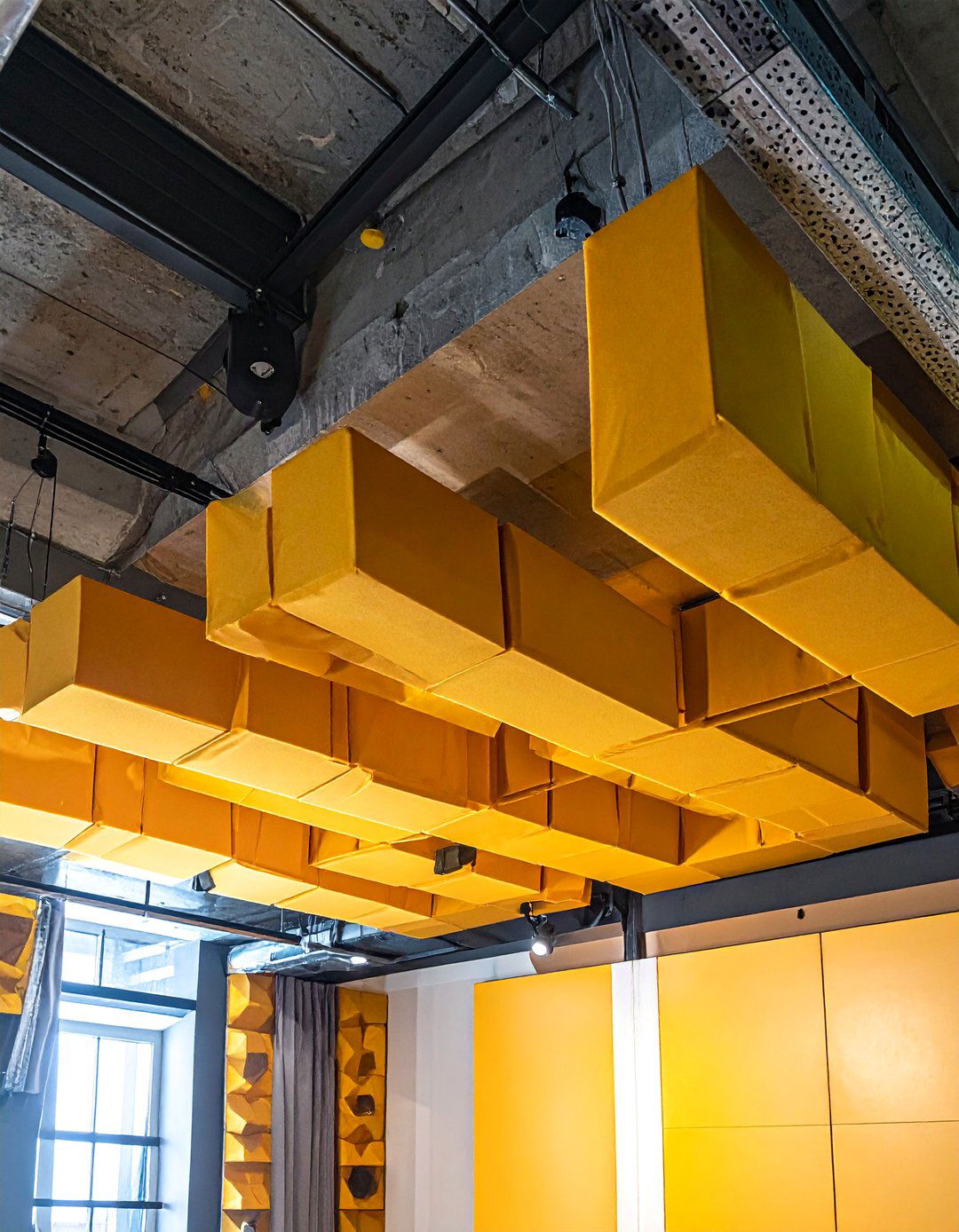
Acoustic panels suspended from exposed structure provide sound control while maintaining visual access to ceiling elements. These panels can be arranged in artistic patterns that enhance rather than hide industrial features. Modern acoustic materials come in various colors and textures that complement industrial aesthetics. Do you need better sound control without sacrificing your industrial ceiling design? Suspended panels offer practical solutions that maintain design integrity. This approach works particularly well in basement music rooms, home theaters, or open-plan spaces where sound management is essential. Choose panels with industrial-appropriate finishes that coordinate with existing exposed elements.
21. Raw Steel Beam Displays
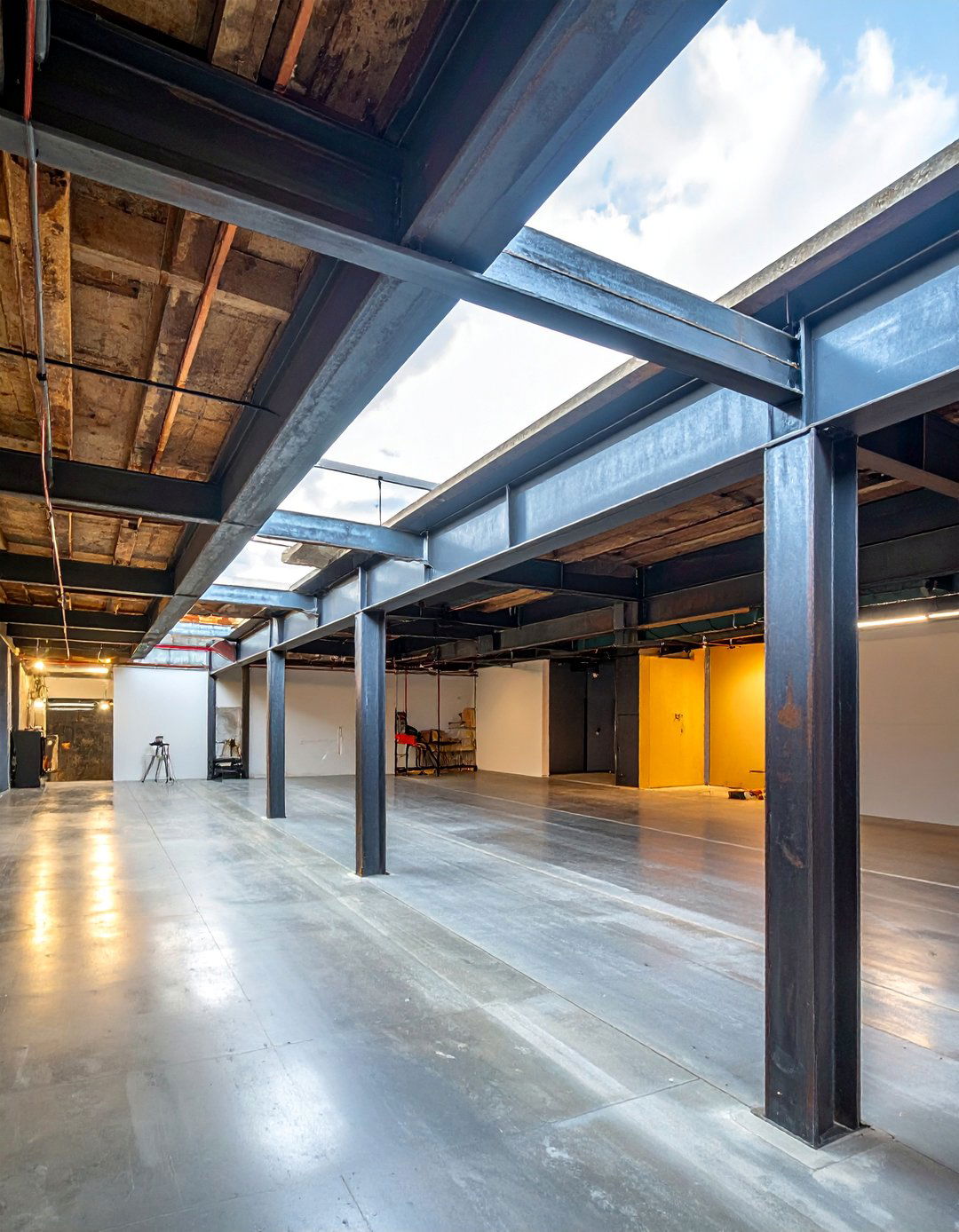
Unfinished steel beams showcase the authentic materials and construction methods that define industrial architecture. The natural patina and surface variations tell stories about the building process and material properties. Clear protective coatings can preserve the raw appearance while preventing rust and deterioration. This approach requires confidence in embracing imperfection as part of the aesthetic appeal. Raw steel elements work best when integrated with complementary materials and appropriate lighting that highlights rather than hides surface variations. The honest display of structural materials creates authentic industrial atmospheres that cannot be replicated with applied finishes.
22. Vintage Tin Tile Features
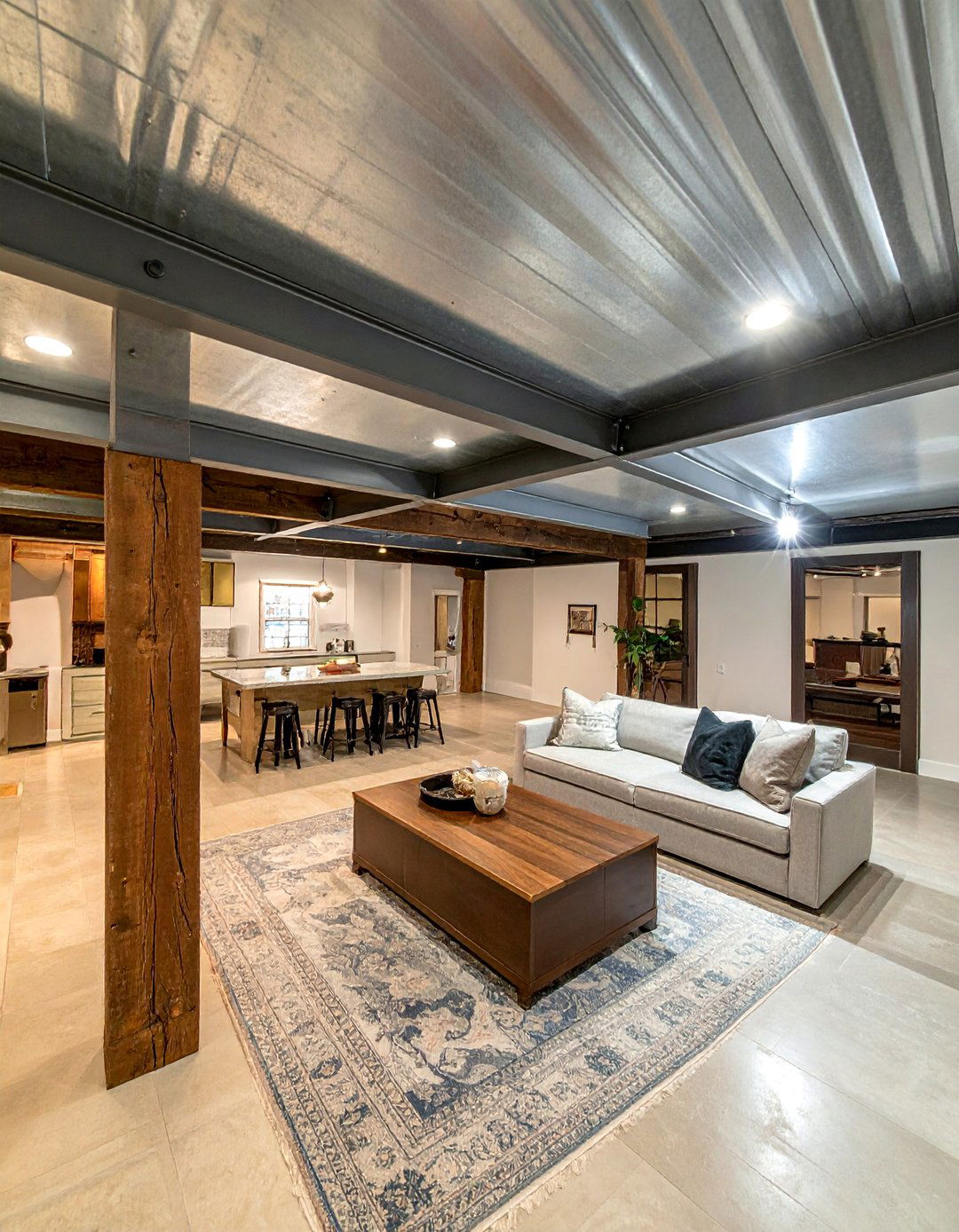
Decorative tin tiles installed in sections between exposed beams add historical character while maintaining industrial authenticity. These pressed metal elements provide textural interest and period-appropriate detailing. Vintage tiles often feature intricate patterns that create focal points within larger ceiling compositions. The reflective surfaces enhance light distribution while adding sparkle and visual movement. This treatment works particularly well in basement bars or entertainment areas where historical character enhances the overall atmosphere. Choose tiles with appropriate patina and finish levels that complement rather than compete with other exposed elements throughout your basement design.
23. Open Web Joist Exposure
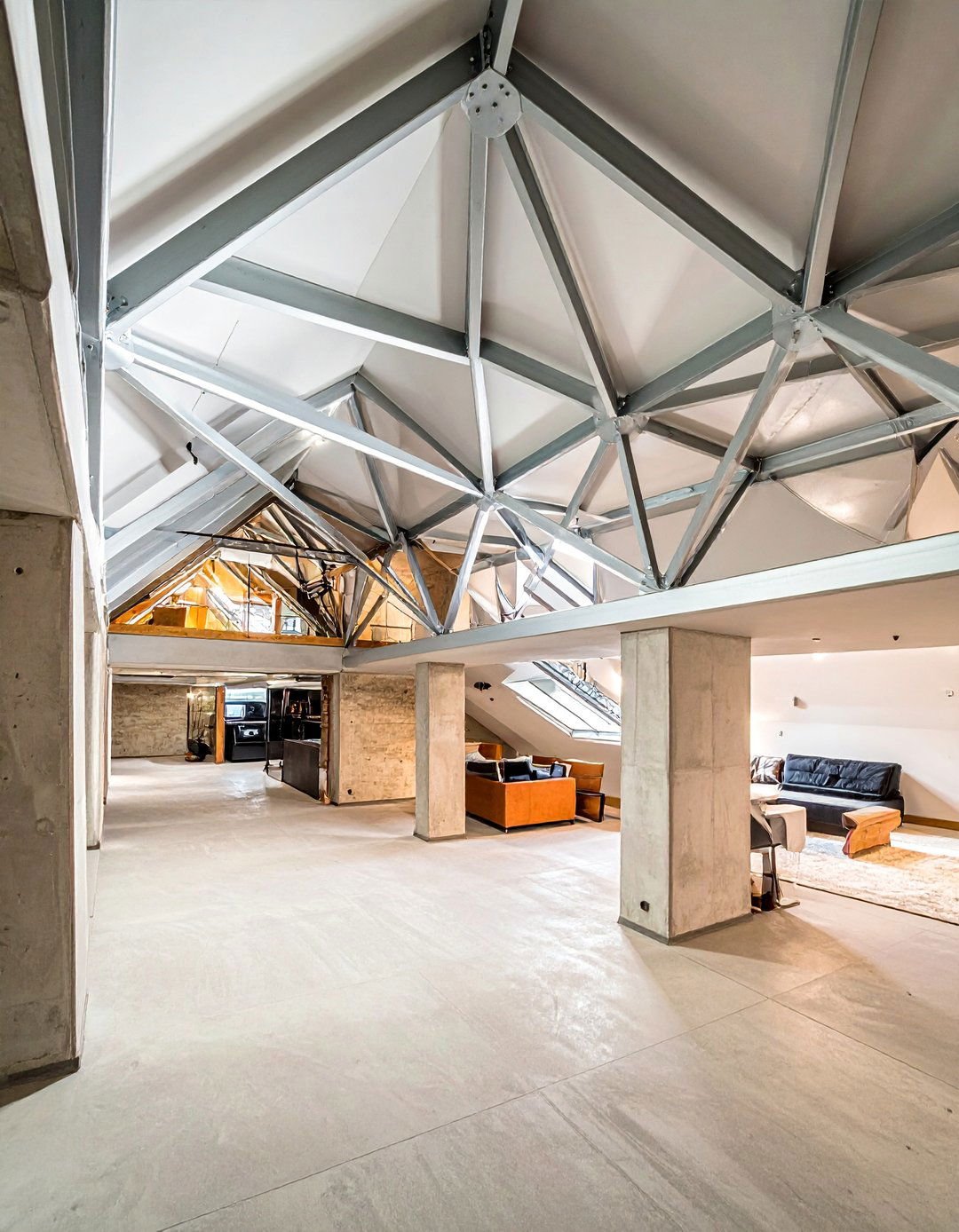
Exposed open web joists create impressive geometric patterns that celebrate structural engineering as decorative elements. These manufactured building components feature repetitive triangular patterns that add visual rhythm and mathematical precision to ceiling designs. The open design maintains sight lines while providing structural support and utility routing capabilities. This approach works particularly well in modern basement conversions where engineering precision aligns with contemporary design sensibilities. Proper finishing and coordinated lighting enhance these structural elements' decorative potential while maintaining their functional integrity and industrial authenticity.
24. Industrial Fan Integration
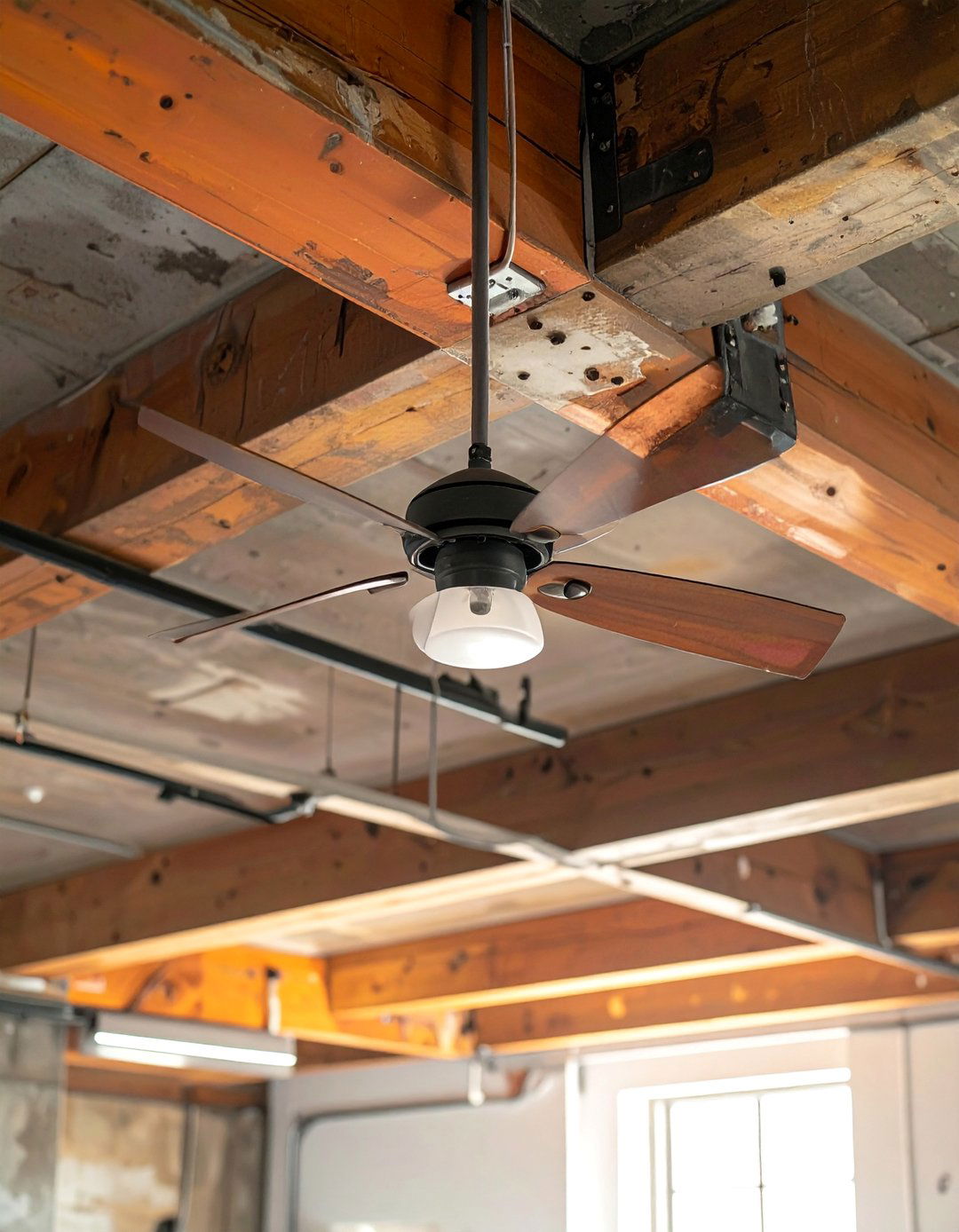
Ceiling fans with industrial styling provide air circulation while reinforcing the utilitarian aesthetic. Modern industrial fans combine functional airflow with period-appropriate design details like exposed motors and metal blades. These fixtures help address common basement comfort issues while enhancing rather than detracting from exposed ceiling designs. The mechanical appearance supports industrial design narratives while providing practical benefits. Choose fans with appropriate scaling and finish levels that coordinate with other exposed elements. Industrial fans work particularly well in basement workshops, gyms, or entertainment areas where air circulation enhances comfort and usability.
25. Exposed Conduit Arrangements
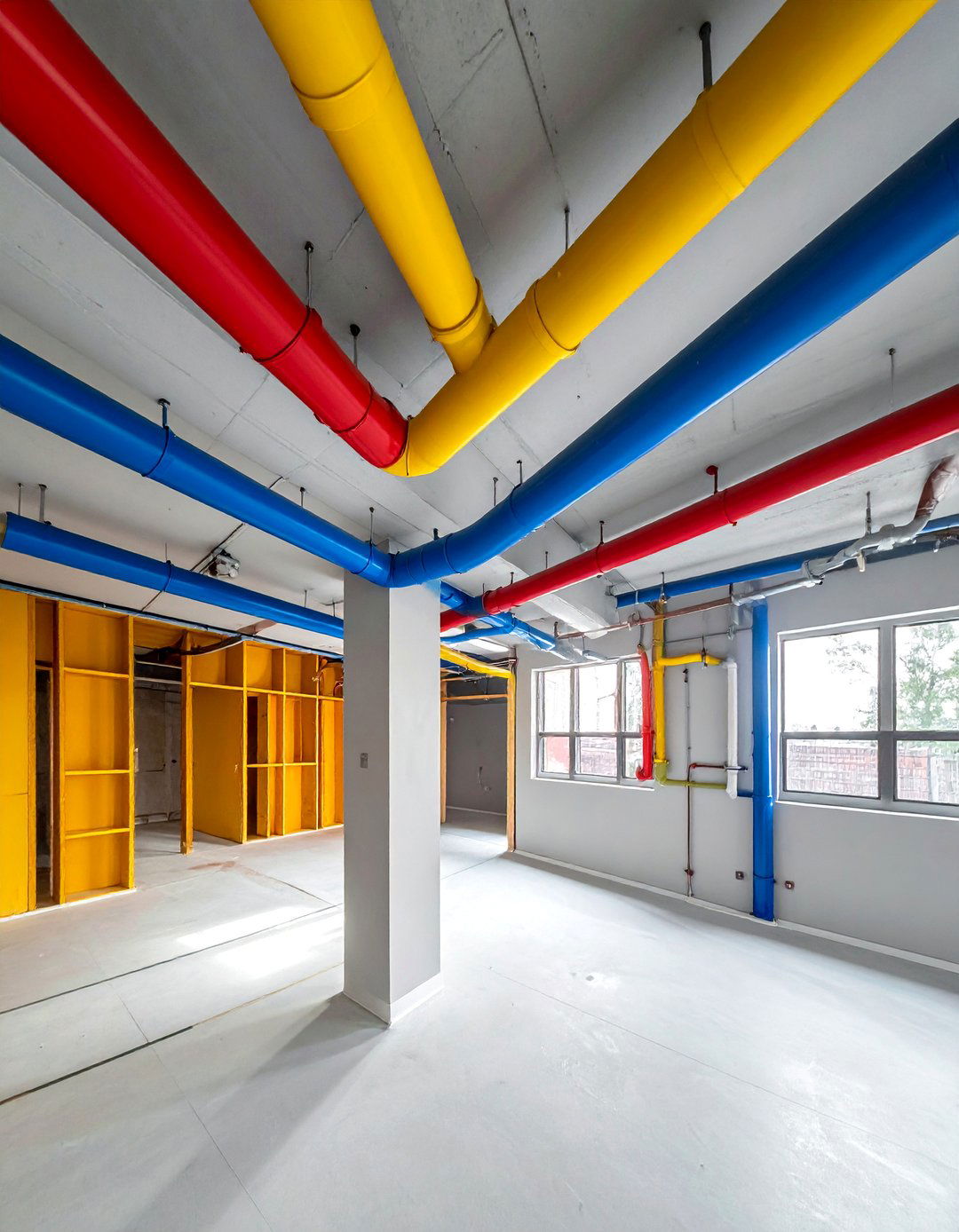
Electrical conduit routed in geometric patterns creates functional art installations that celebrate utility infrastructure. This approach transforms necessary electrical distribution into decorative elements that enhance industrial aesthetics. Careful planning can create visually pleasing arrangements that serve both functional and aesthetic purposes. How can electrical systems become part of your design rather than something to hide? Exposed conduit demonstrates industrial design's celebration of functional honesty. Use appropriate materials and finishing techniques to ensure safety while creating visually appealing installations. This treatment works best when integrated with overall ceiling design concepts rather than applied as afterthoughts.
Conclusion:
Exposed basement ceilings offer remarkable opportunities to create authentic industrial style that celebrates both function and form. These design approaches transform utilitarian necessity into architectural features that add character, maximize space, and reduce renovation costs. Whether you choose dramatic black paint, warm natural wood, gleaming metallics, or bold color accents, success depends on thoughtful execution that treats exposed elements as intentional design features rather than compromises. The key lies in understanding how different materials, colors, and lighting work together to create cohesive environments that feel sophisticated rather than unfinished. By embracing the honest expression of structural and mechanical systems, you can create basement spaces that rival professional loft conversions while maintaining practical access to utilities and infrastructure for future modifications or maintenance needs.

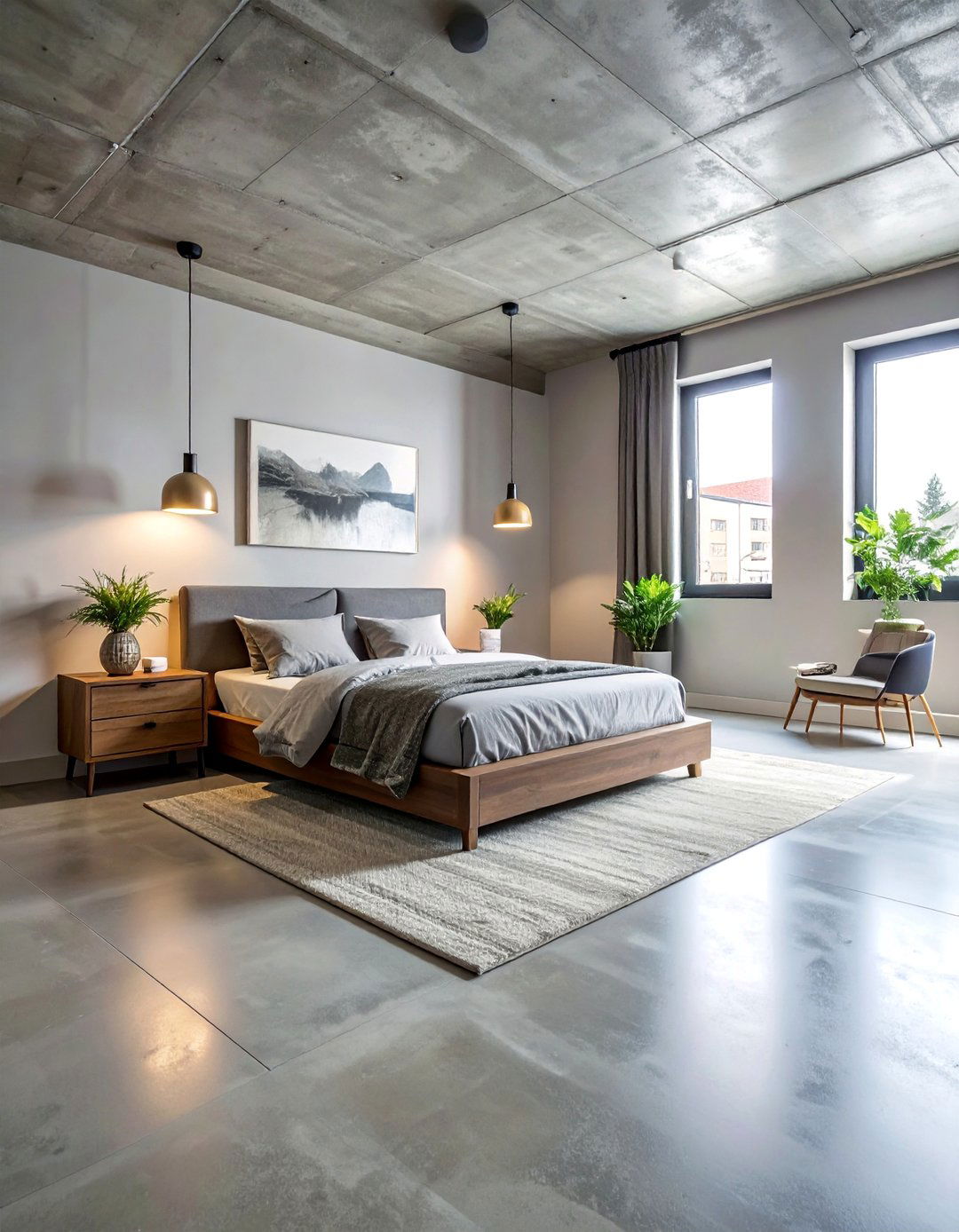
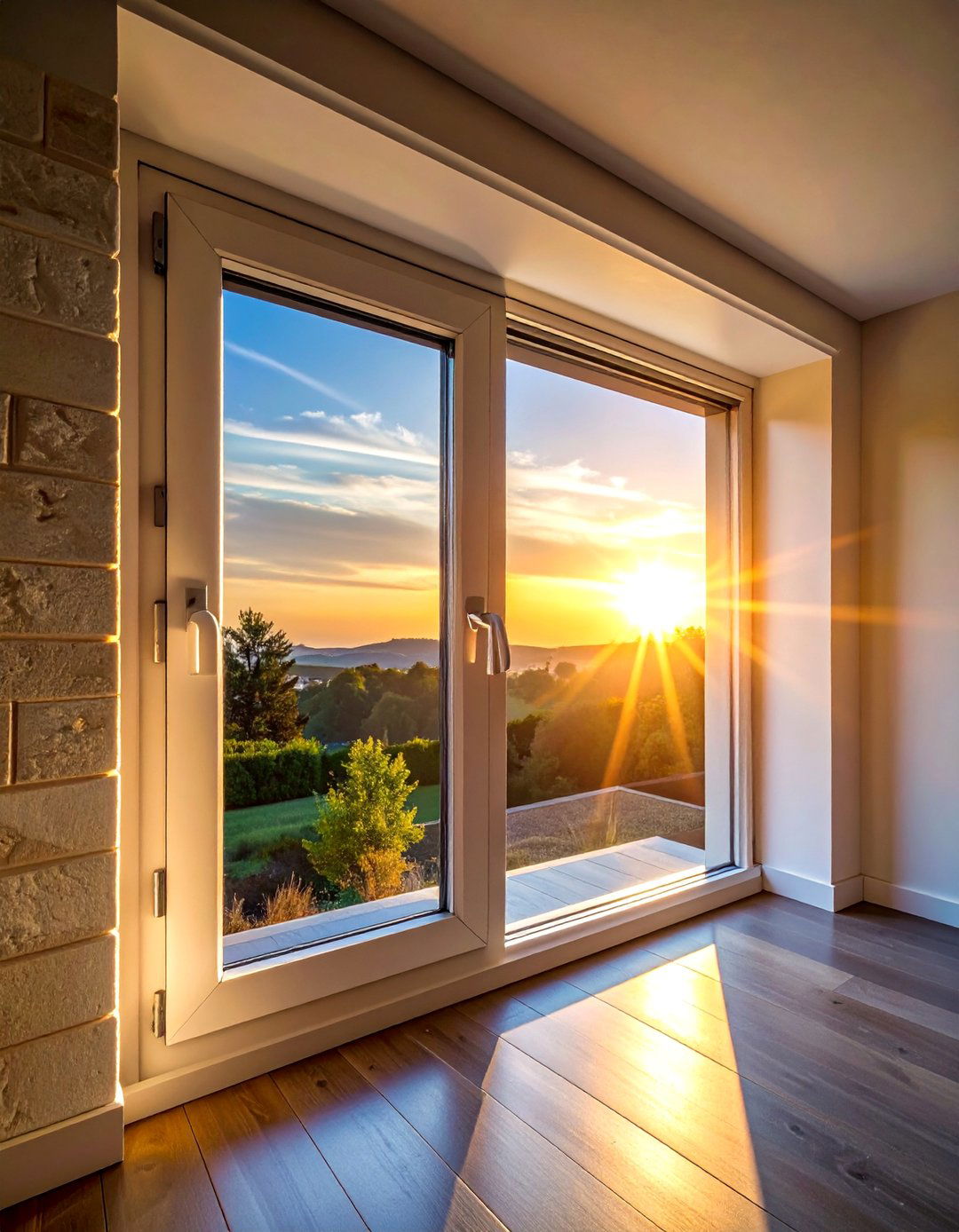
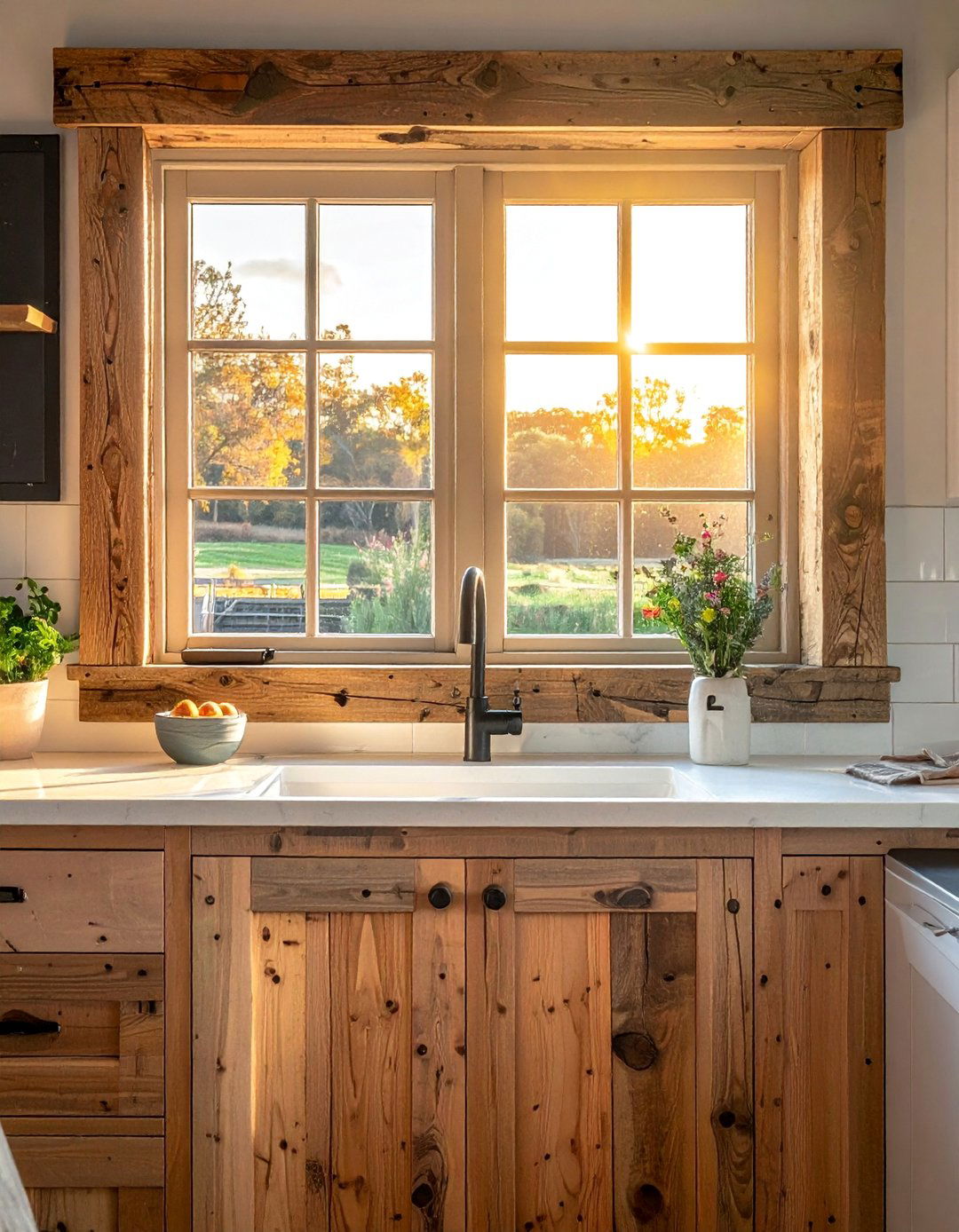
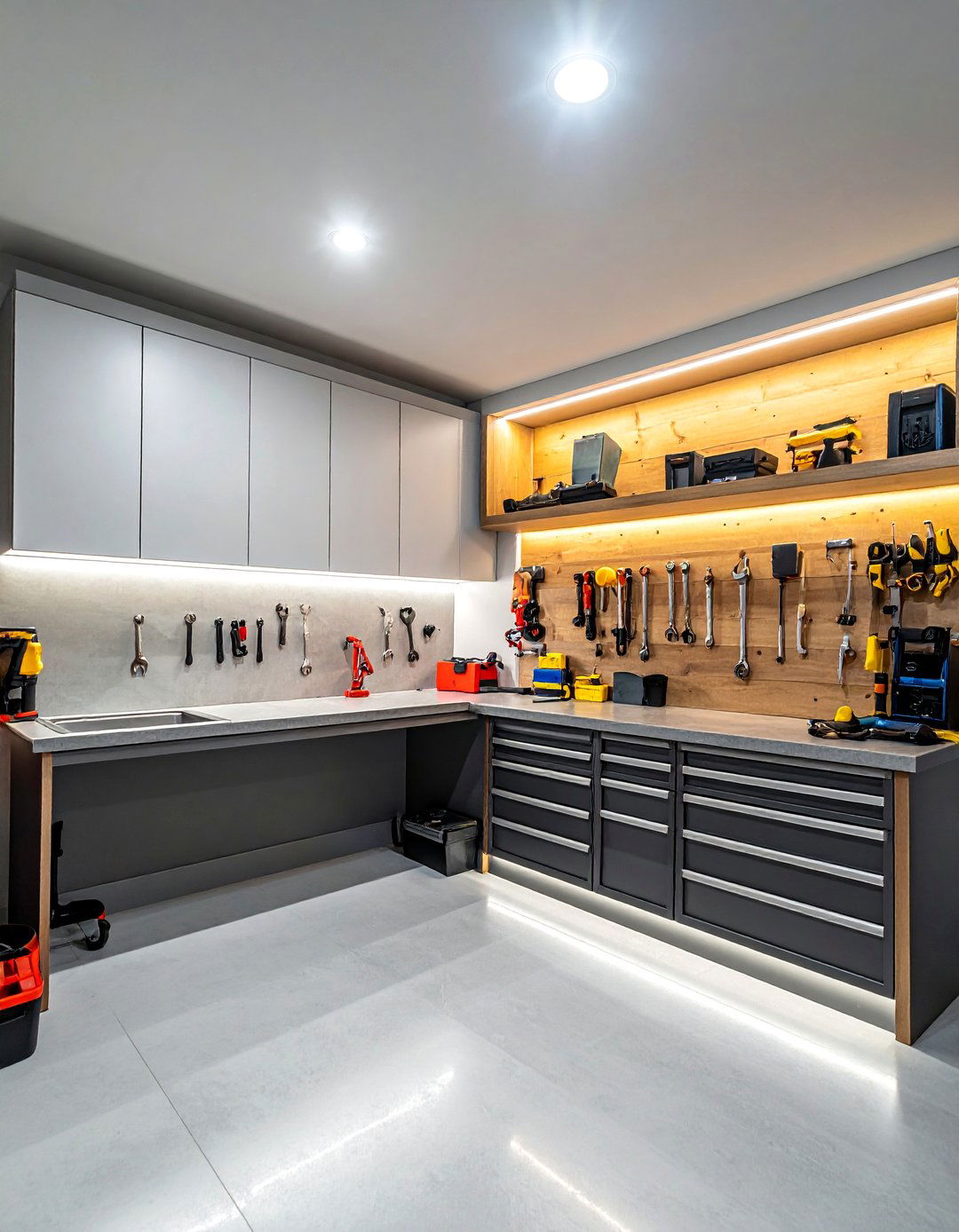
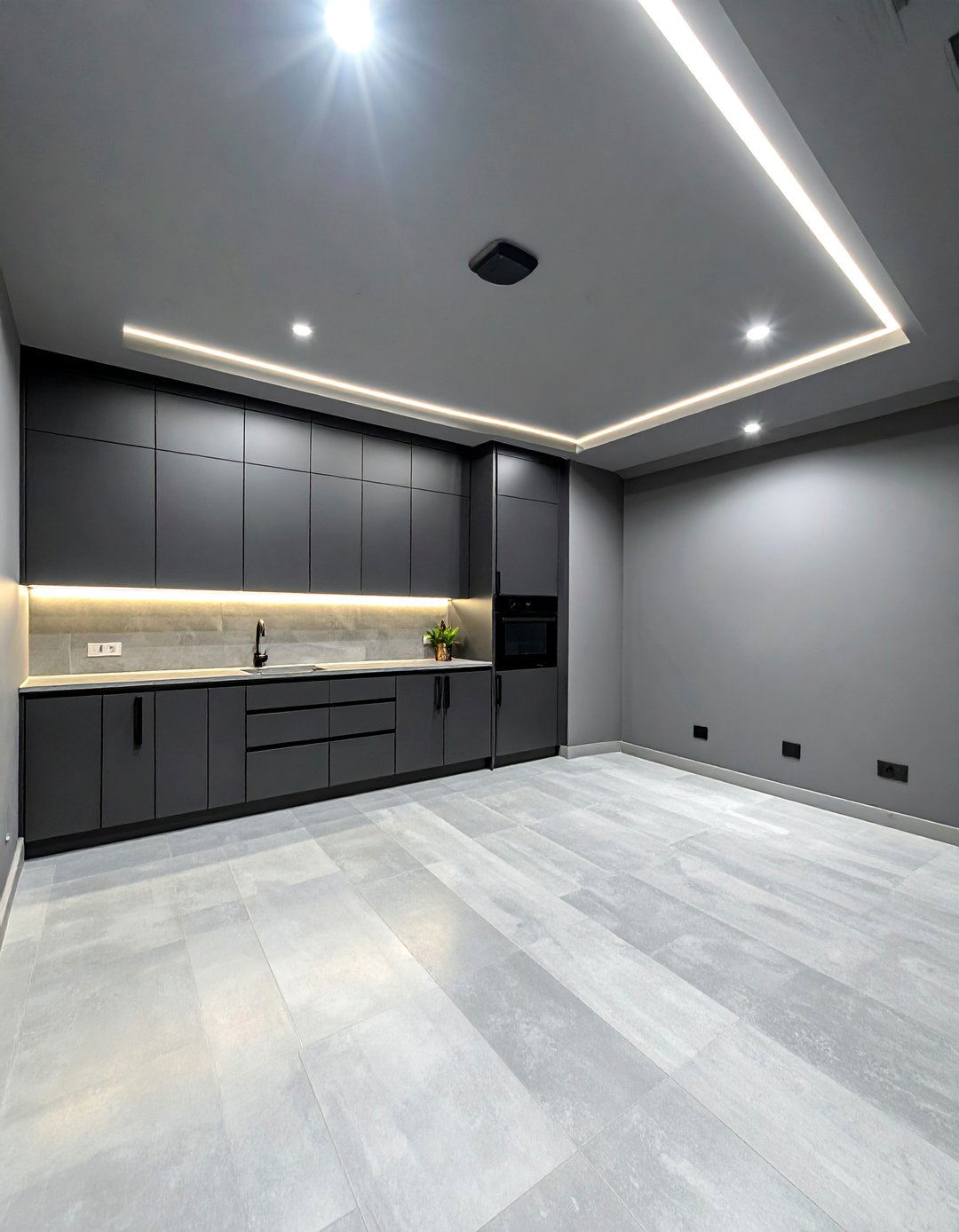
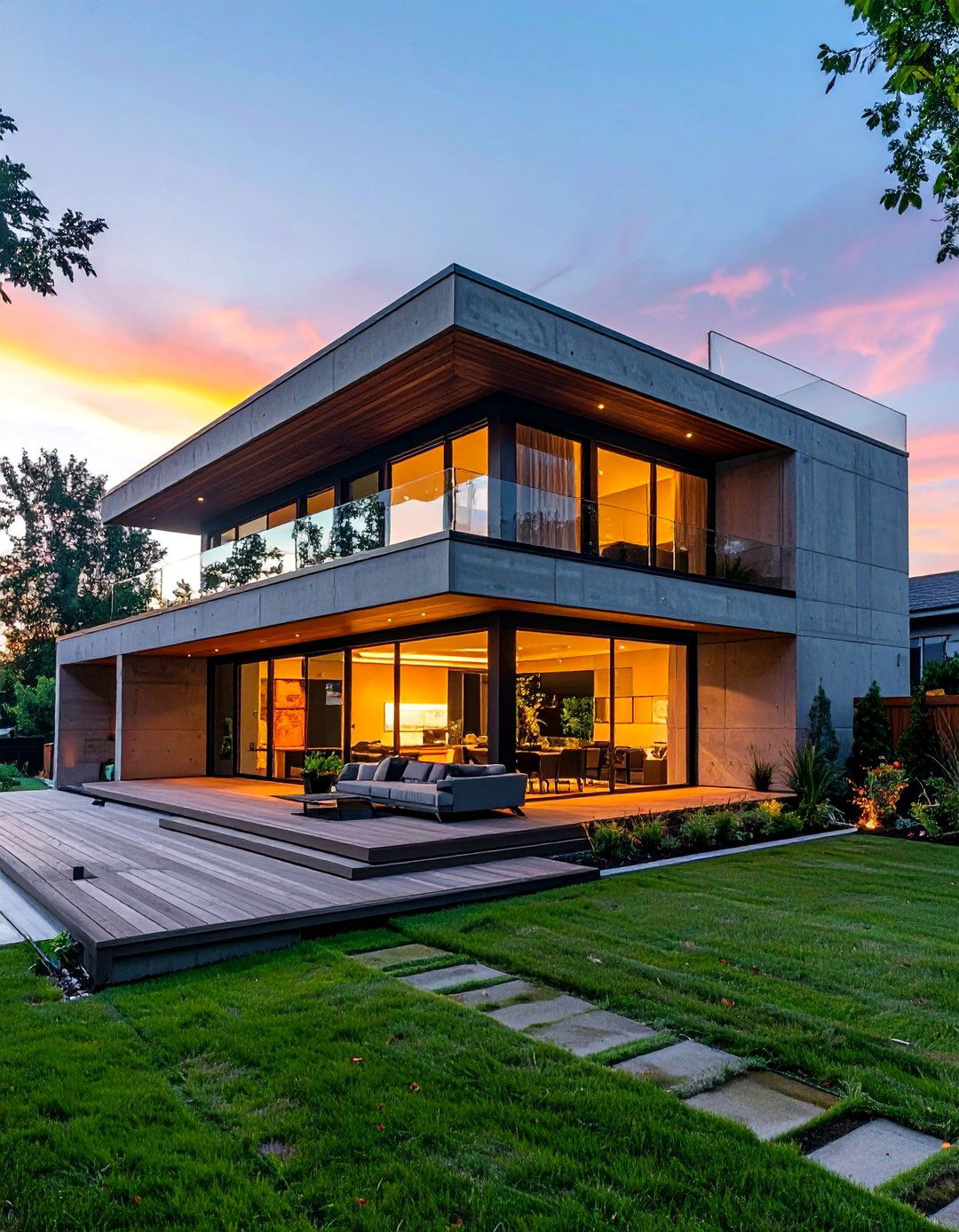
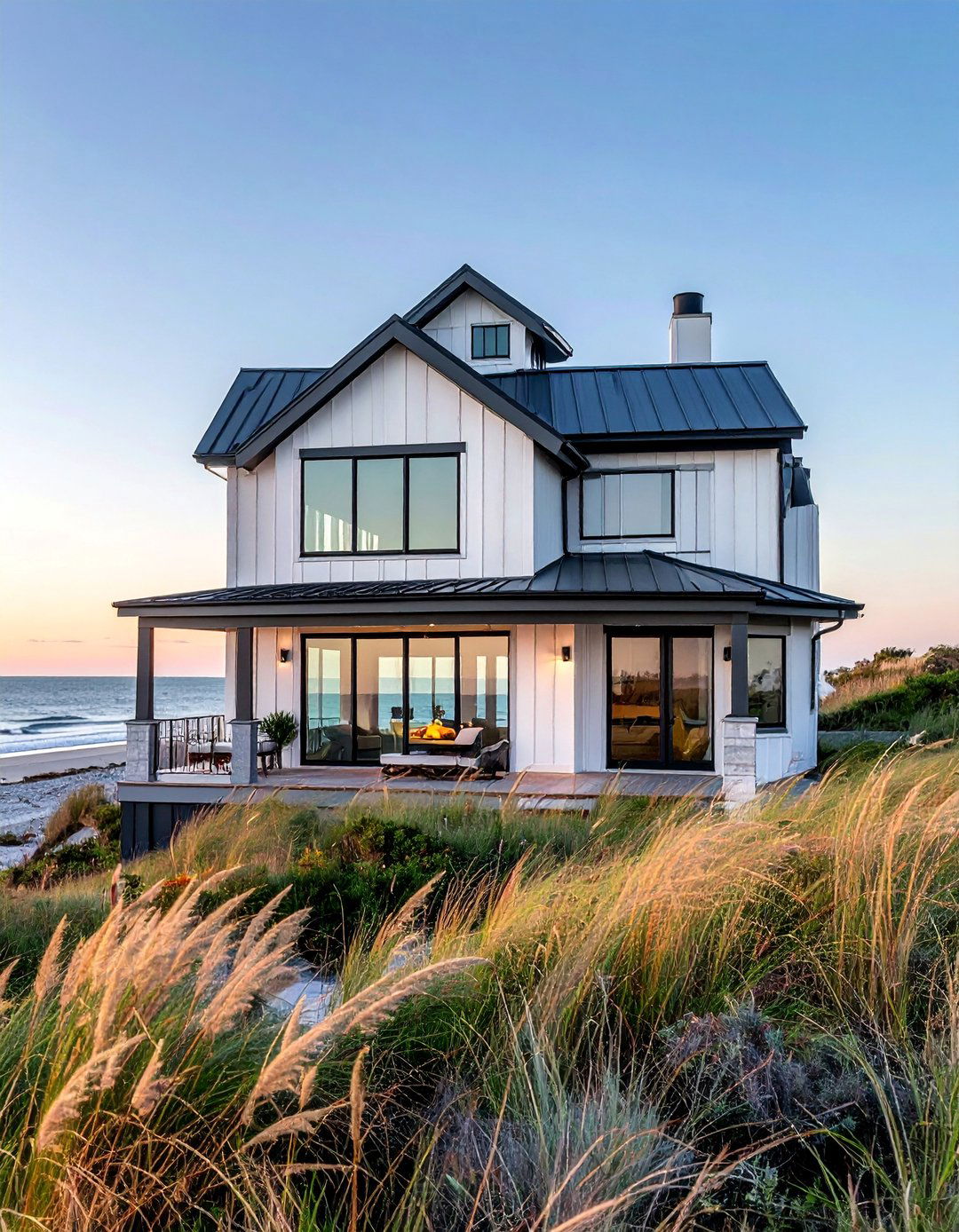
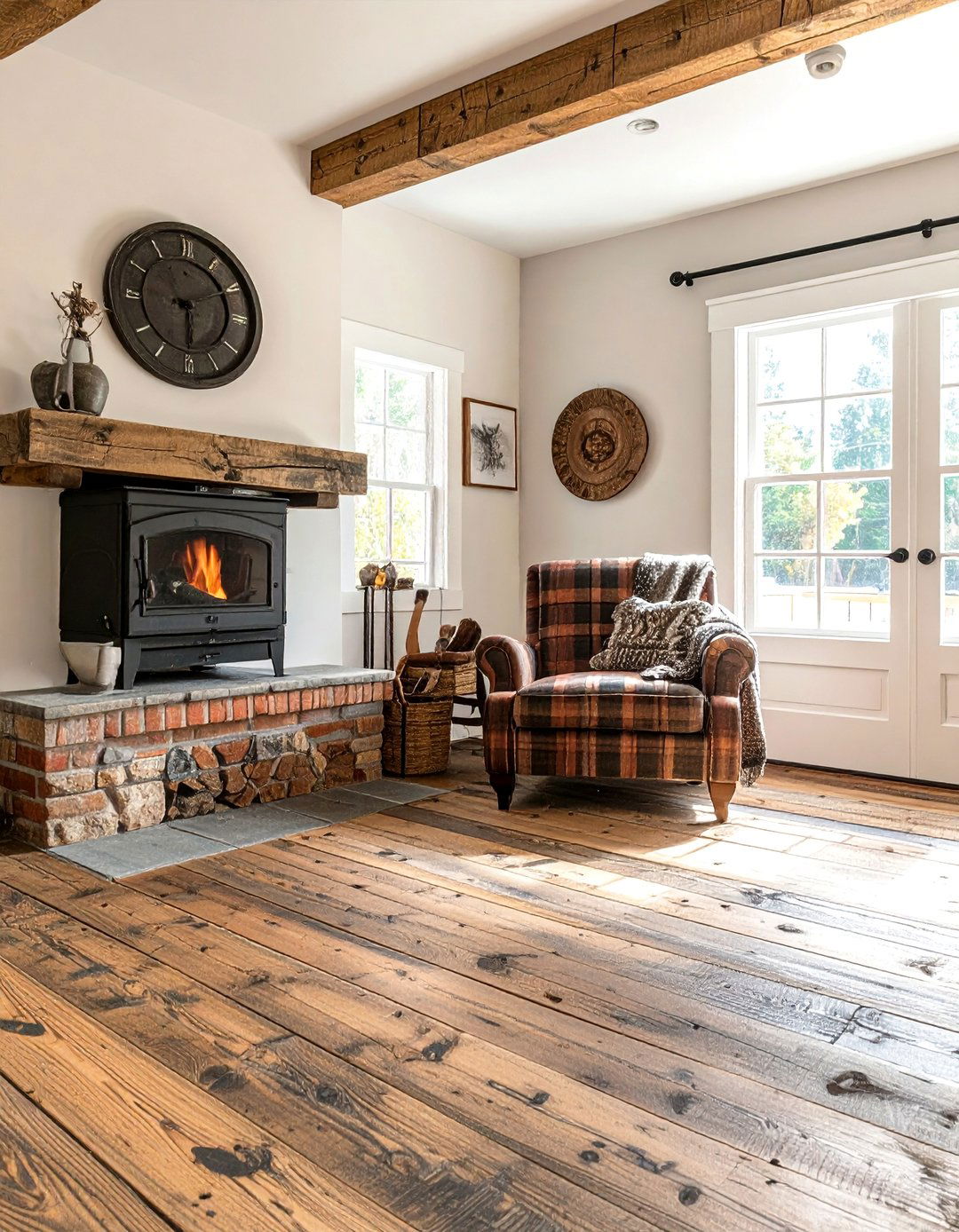
Leave a Reply